Chemistry and Chemists № 2 2024
Journal of Chemists-Enthusiasts
| Content | Chemistry experiments - video | Physics experiments - video | Home Page - Chemistry and Chemists |
|
Chemistry and Chemists № 2 2024 Journal of Chemists-Enthusiasts |
Tetraamminecopper perchlorate (TACP) Alexandrio |
|
Having noticed a mistake in the text, allocate it and press Ctrl-Enter
Tetraamminecopper(II) perchlorate (TACP)
I decided to obtain tetraamminecopper (II) perchlorate, [Cu(NH3)4](ClO4)2. The first question was what is the best way to synthesize this substance:Тетраамминмеди (II) перхлорат * with the interaction of a solution of copper perchlorate with 25% ammonia; * with the reaction of copper oxide, ammonium perchlorate and 25% ammonia. In the first case, you just need to mix the solutions, in the second, you will have to wait until the copper oxide dissolves in ammonia, but the solution of the target compound will be more concentrated. A colleague recommended the first method. I try with small amounts of substances. I weighed the required amount of reagents: a 58% copper perchlorate solution and a 25% ammonia solution (ammonia was taken with an excess of 10%)... Решил получить тетраамминмеди (II) перхлорат, [Cu(NH3)4](ClO4)2. Первый вопрос - каким способом лучше синтезировать данное вещество: * взаимодействием раствора перхлората меди с 25 % аммиаком; * реакцией окиси меди, перхлората аммония и 25 % аммиака. В первом случае нужно просто смешать растворы, во втором - придется ждать, пока оксид меди растворится в аммиаке, зато раствор целевого вещества будет более концентрированным. Коллега посоветовал первый способ. Пробую с малыми количествами веществ. Взвесил необходимое количество реагентов, а именно: 58 % раствор перхлората меди и 25 % раствор аммиака (аммиак был взят с избытком в 10 %)... 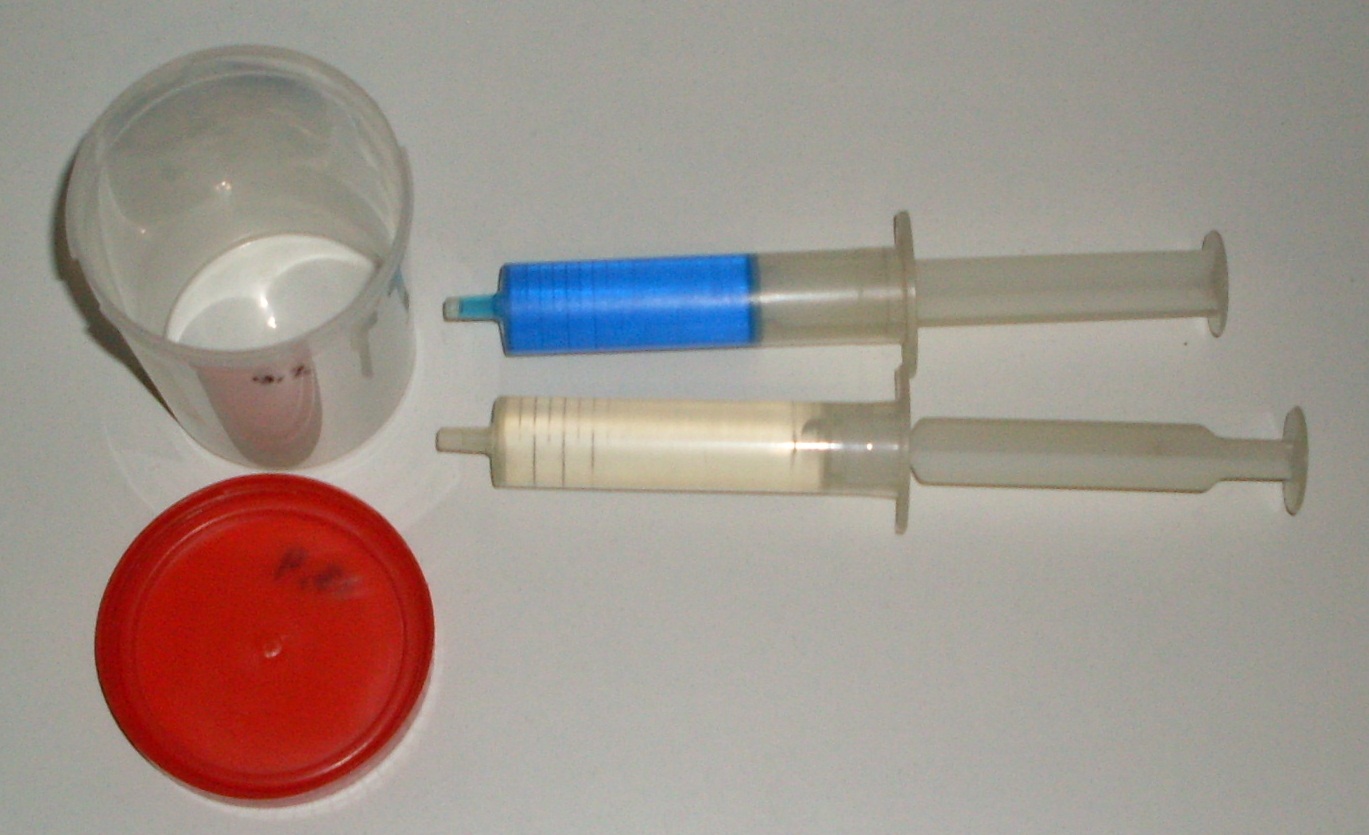 ...и добавил перхлорат к аммиаку.  Heating occurred, apparently, due to an excess of the acid in the copper perchlorate solution. I synthesized copper perchlorate about 9 years ago. I hope there is not too much acid in the solution. As a result, after cooling in the refrigerator, a mother solution and moist purple-black crystals of almost equal mass were obtained. Photos of the wet crystals: Блин, я и не подозревал, что раствор при этом сильно нагреется. Но тем не менее первоначально образовавшийся осадок с легкостью при перемешивании растворился. Посмотрю, что получится при охлаждении. Нагрев имел место, видимо, из-за избытка кислоты в растворе перхлората меди. Перхлорат меди получал где-то 9 лет назад. Надеюсь, там не очень большой избыток кислоты. В итоге после охлаждения в холодильнике получились маточный раствор и влажные фиолетово-чёрные кристаллы почти равной массы. Фото влажных кристаллов:  Далее промыл их ледяным этиловым спиртом: 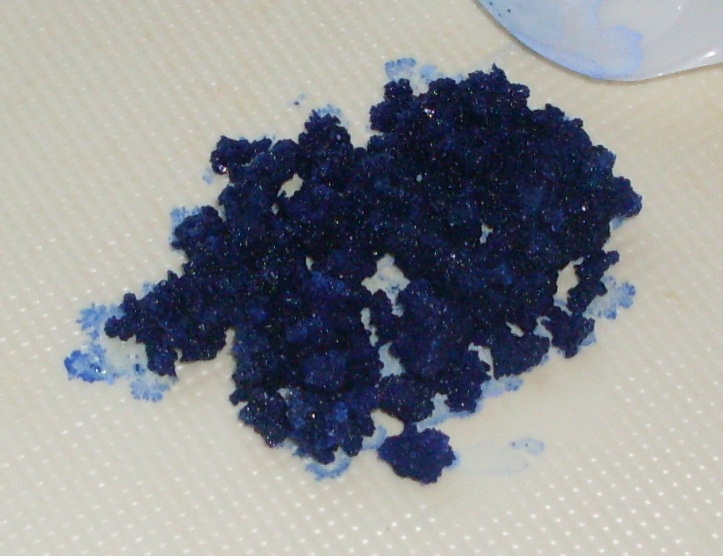 ...и подсушил вентилятором (холодным воздухом!). Зимой воздух в помещениях достаточно сухой. Видимо поэтому подсушить вещество не составило труда. 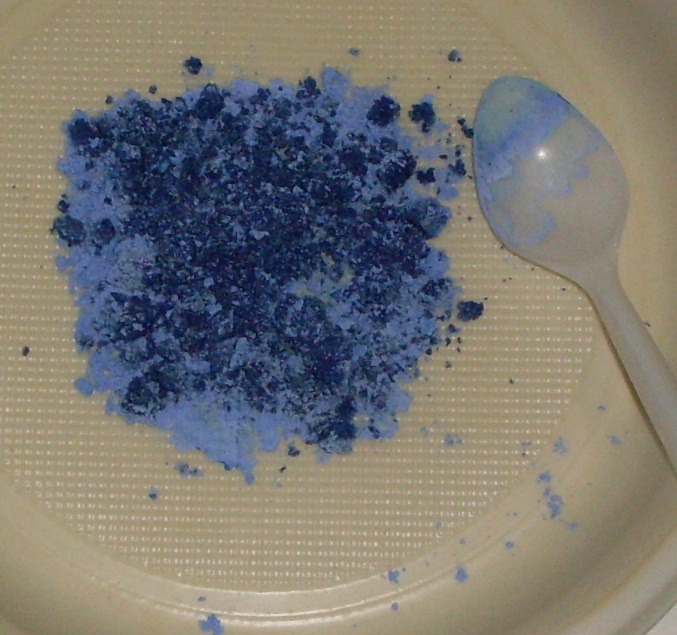 Profit! 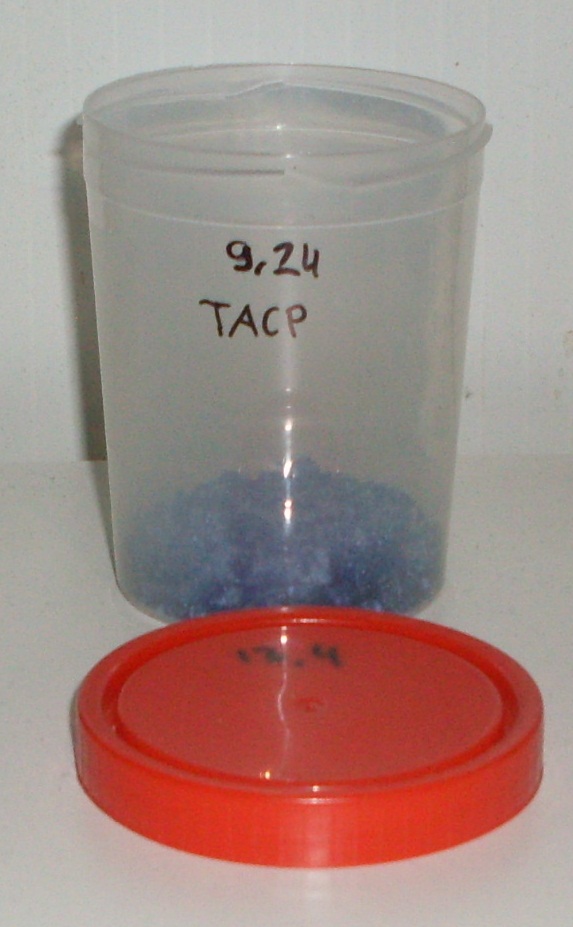 А это - перхлорат меди 6-водный перед сушкой (другой мой синтез). 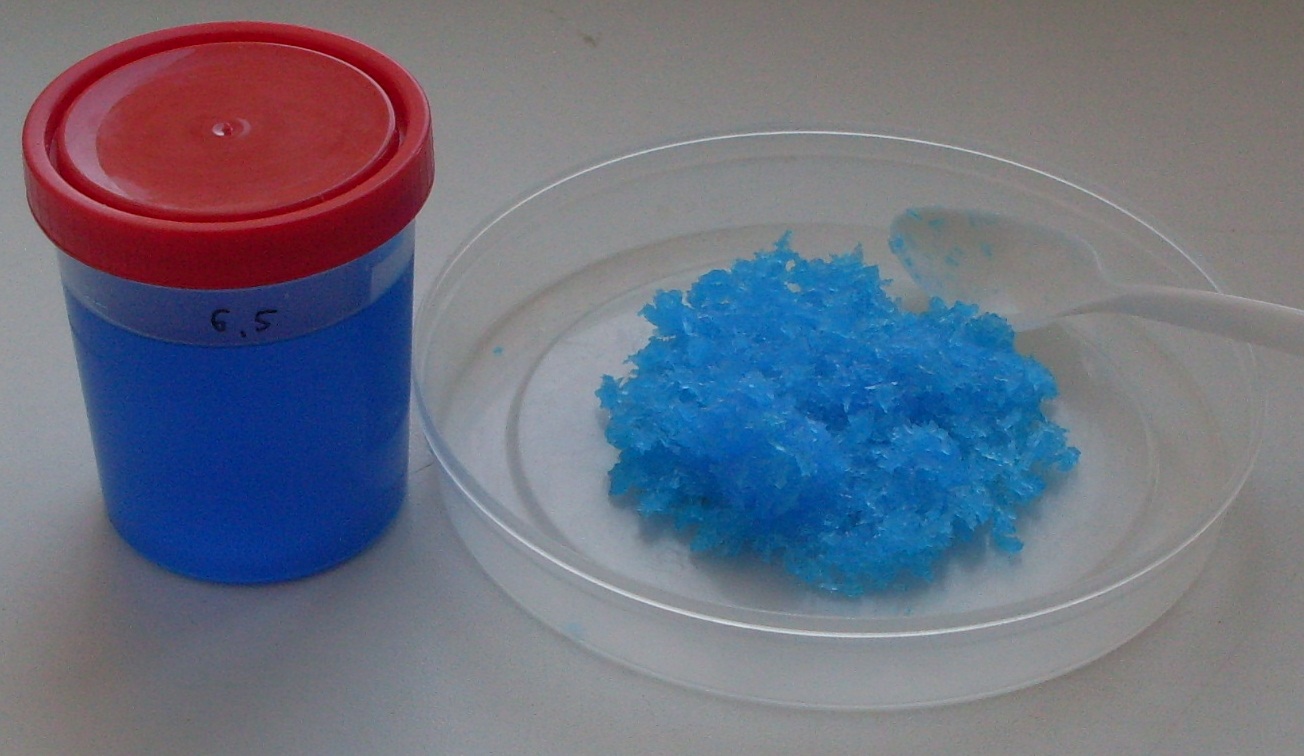 |
Dissolution of copper in citric acid - part 1, 2, 3 Volodymyr M. Viter |
|
Having noticed a mistake in the text, allocate it and press Ctrl-Enter
In the presence of atmospheric oxygen, metallic copper dissolves in non-oxidizing acids. This group includes acids whose anion does not exhibit oxidizing properties under these conditions. Examples include hydrochloric acid (any concentration), dilute sulfuric acid, phosphoric acid and acetic acid. Such acids can act as oxidants only due to the hydrogen cation. They usually dissolve metals located in the electrochemical voltage series to the left of hydrogen, for example, magnesium, iron, and zinc, but not metals located to the right of hydrogen: bismuth, copper, and silver.
However, another oxidizing agent may be present in the solution, that reacts with the metal, for example, hydrogen peroxide or oxygen. Under these conditions, non-oxidizing acids are sometimes able to dissolve metals located in the voltage series to the right of hydrogen, for instance, copper. Such experiments were described in the journal [1], I think there is no need to retell them again. The question arose, what other acid can be used to dissolve metallic copper? This acid must be readily available and not exhibit oxidizing properties. The choice fell on citric acid. Three and a half months ago, I started the experiment. I dissolved 15 g of citric acid (monohydrate) in 30 ml of distilled water. The solution was poured into a 300 ml flask. Next, I placed the stripped copper wire into the flask (I partially used the wire that remained after a similar experiment with acetic acid). The flask was hermetically sealed with a rubber stopper (cap). In the first days, I opened the cap and stirred the contents several times a day (then again sealed the flask). Later, I performed the described procedure less often (once every few days), and after two months I stopped doing it. Day 0 The citric acid solution had a pink tint (before the experiment). I did not attach any importance to this and began the experiment. Day 1 The citric acid solution is colourless. If I had better eyesight, I might have noticed a blue tint of the solution. Day 2 A slight blue (cyan) tint of the solution became noticeable, therefore, copper began to dissolve in citric acid in the presence of air. Day 4 Light blue solution. Day 7 Blue (cyan) solution (it looks like a dilute aqueous solution of copper sulfate). Day 12 Blue (cyan) solution. Day 19 Intense blue solution. Day 64 Intense green solution (a faint blue tint is visible). The colour resembles a solution of nickel salts. A dark green coating is visible in some places on the surface of the copper wire above the solution level. Day 80 The colour of the solution intensified it was intense green. There is a dark green coating on the surface of the copper wire. Day 115 The colour of the solution intensified. The solution was dark green. *** Thus, copper gradually dissolves in citric acid in the presence of air. __________________________________________________ 1 See the articles Copper, Silver, Gold, Platinum metals [link]. |
|
Растворение меди в лимонной кислоте - часть 1
В присутствии кислорода воздуха металлическая медь растворяется в кислотах-неокислителях. К данной группе относятся кислоты, анион которых в данных условиях не проявляет окислительных свойств. В качестве примера можно назвать соляную кислоту (любая концентрация), разбавленную серную кислоту, фосфорную и уксусную кислоты. Такие кислоты могут проявлять окислительные свойства только за счет катиона водорода. Обычно они растворяют металлы, расположенные в электрохимическом ряду напряжений левее водорода, например, магний, железо, цинк, но не металлы, расположенные правее водорода: висмут, медь, серебро.
Однако, в растворе может присутствовать другой окислитель, который реагирует с металлом например, перекись водорода или кислород. В этих условиях кислоты-неокислители иногда способны растворять металлы, расположенные в ряду напряжений правее водорода, в частности, медь. Такие эксперименты были описаны в журнале [1], думаю не стоит пересказывать их еще раз. Возник вопрос, какую кислоту можно еще использовать, чтобы перевести металлическую медь в раствор? Эта кислота должна быть доступной и не проявлять окислительных свойств. Выбор пал на лимонную кислоту. Три с половиной месяца назад начал эксперимент. Растворил 15 г лимонной кислоты (моногидрат) в 30 мл дистиллированной воды. Раствор перелил в колбу на 300 мл. Далее поместил в колбу зачищенную медную проволоку (частично использовал проволоку, которая осталась после аналогичного эксперимента с уксусной кислотой). Герметично закрыл колбу резиновой пробкой. Первые дни открывал пробку и перемешивал содержимое по несколько раз в день (потом опять герметично закрывал колбу). Потом выполнял описанную процедуру реже (один раз в несколько дней), а через два месяца - перестал. День 0 Раствор лимонной кислоты имел розовый оттенок (перед опытом). Не придал этому значения и начал эксперимент. День 1 Раствор лимонной кислоты бесцветный. Если бы у меня было лучше зрение, возможно, я бы заметил голубой оттенок раствора. День 2 Стал заметен легкий голубой оттенок раствора, следовательно, медь начала растворяться в лимонной кислоте в присутствии воздуха. День 4 Светло-голубой раствор. День 7 Голубой раствор (он похож на разбавленный водный раствор сульфата меди). День 12 Голубой раствор. День 19 Интенсивно-голубой раствор. День 64 Интенсивно-зеленый раствор (заметен слабый голубой оттенок). Цвет напоминает раствор солей никеля. На поверхности медной проволоки выше уровня раствора местами заметен темно-зеленый налет. День 80 Окраска раствора усилилась. Цвет - интенсивно-зеленый. На поверхности медной проволоки присутствует темно-зеленый налет. День 115 Окраска раствора усилилась. Цвет - темно-зеленый. *** Таким образом, медь постепенно растворяется в лимонной кислоте в присутствии воздуха. |
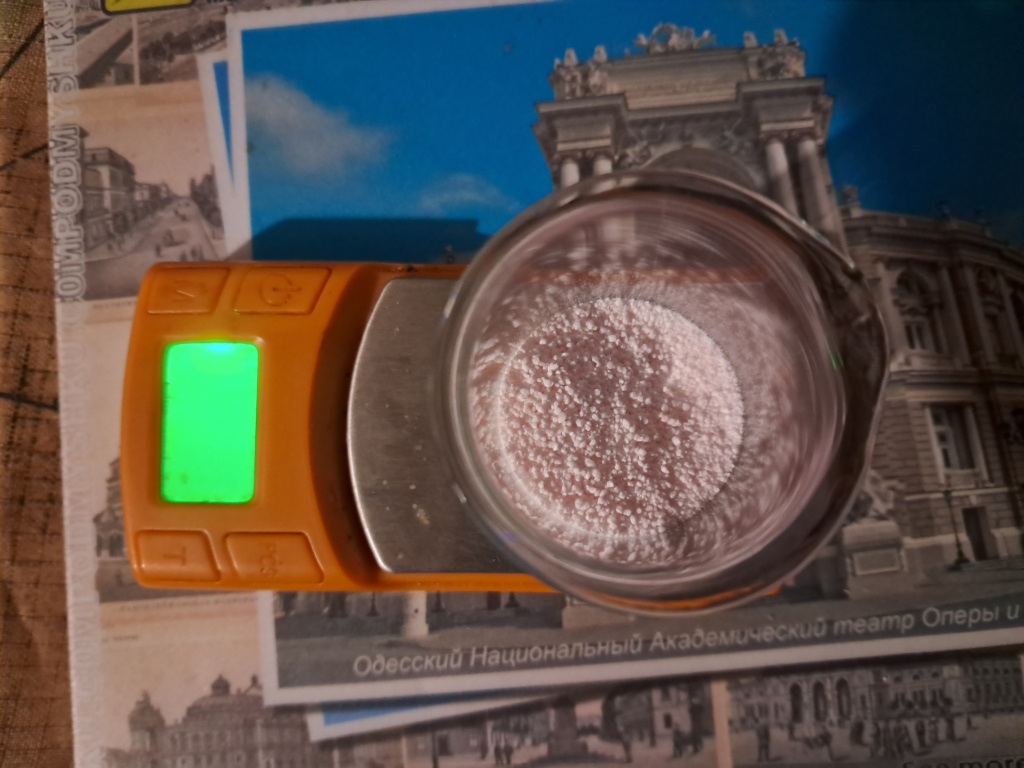
Dissolution of copper in citric acid |
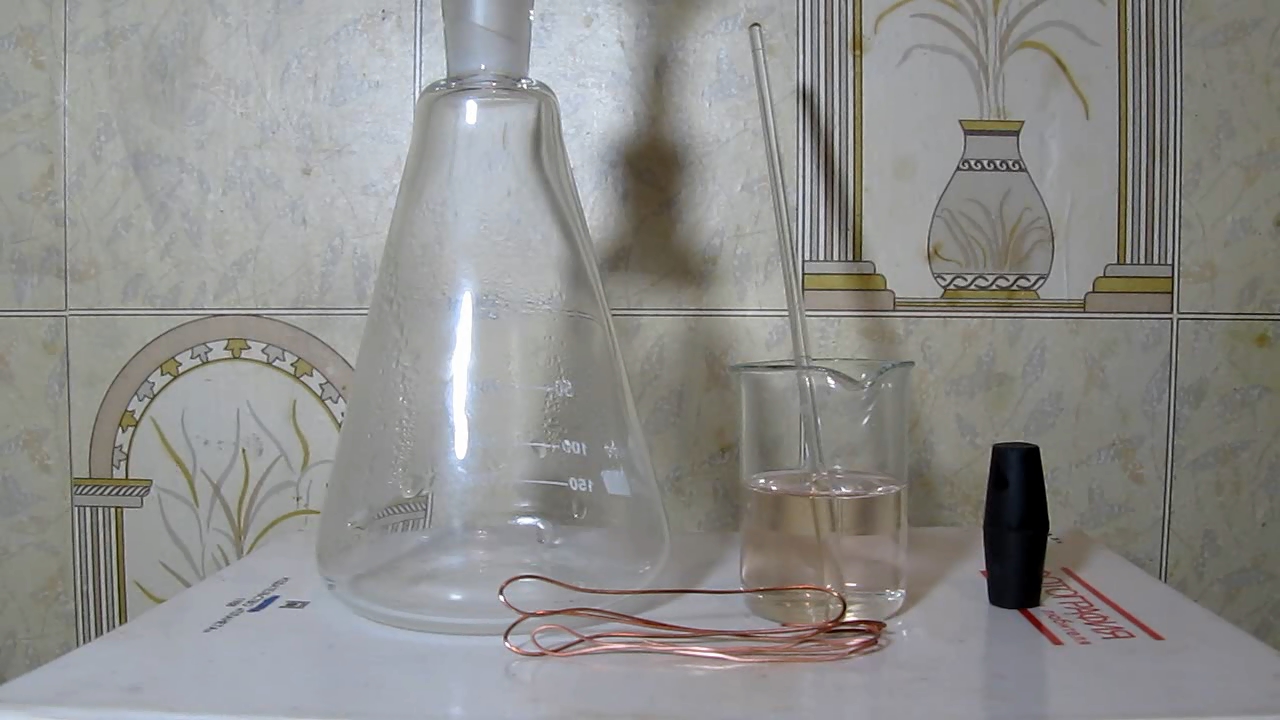
|
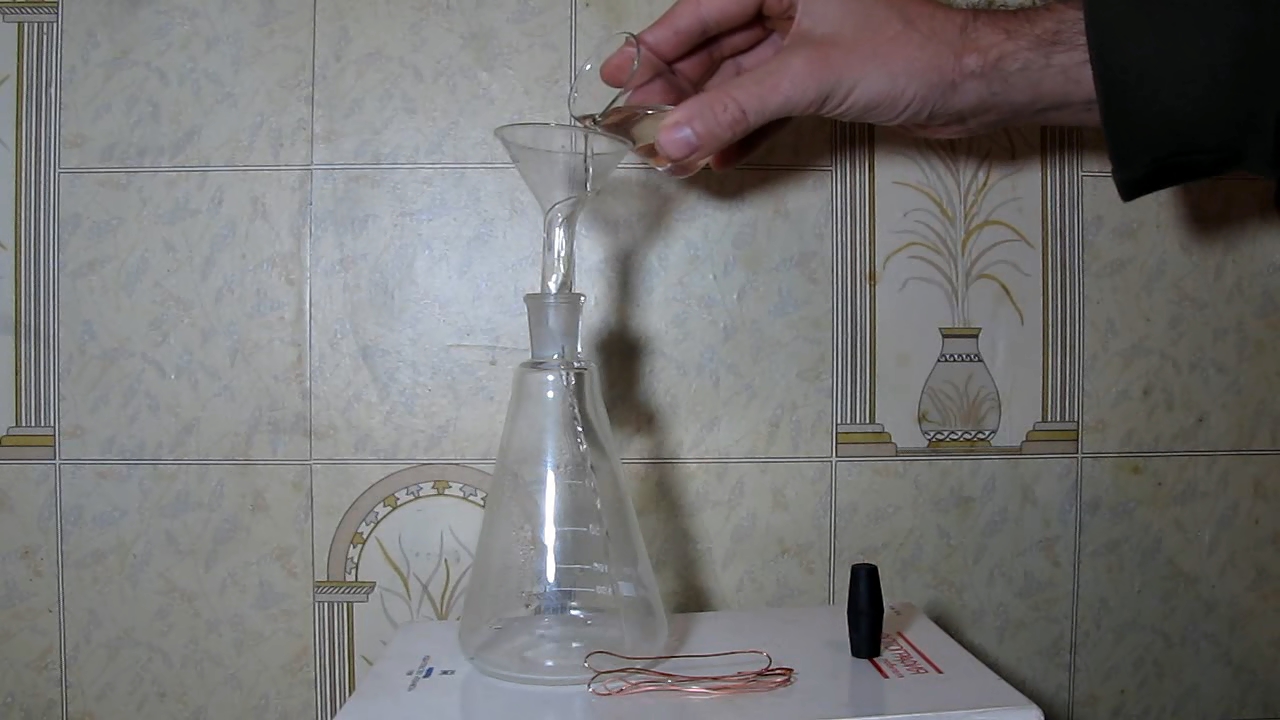
|

|

|
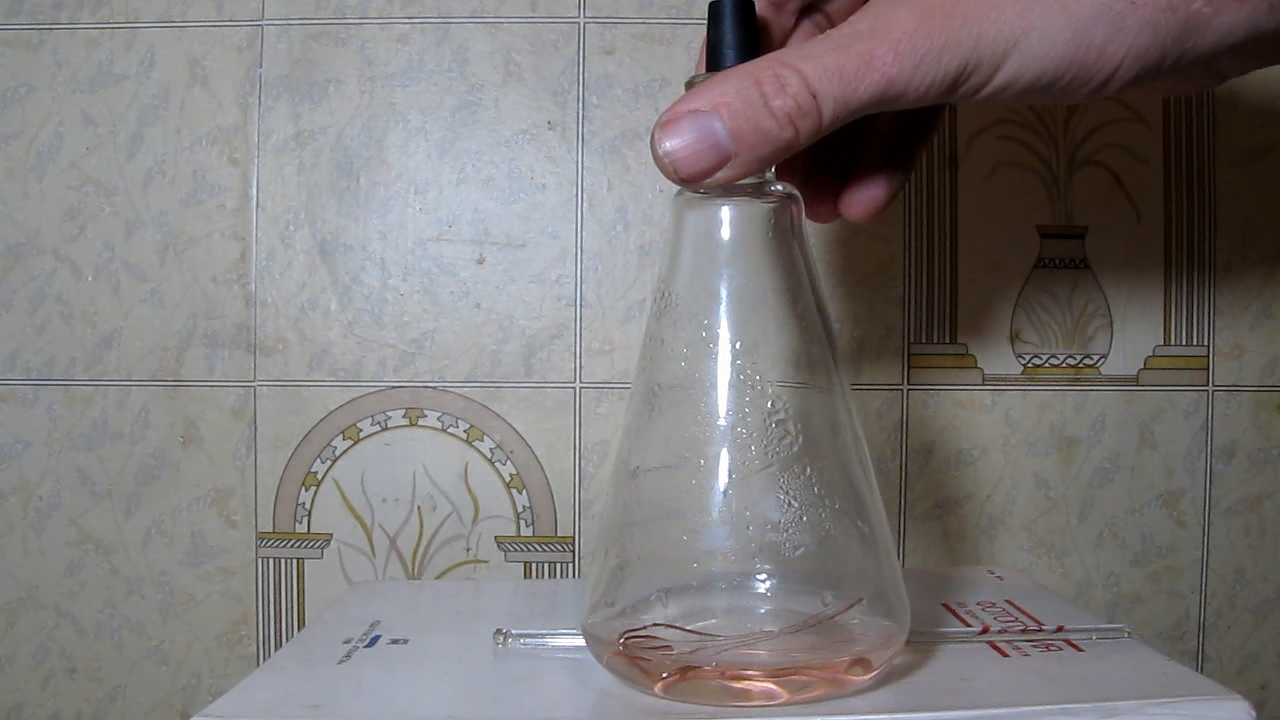
|

|
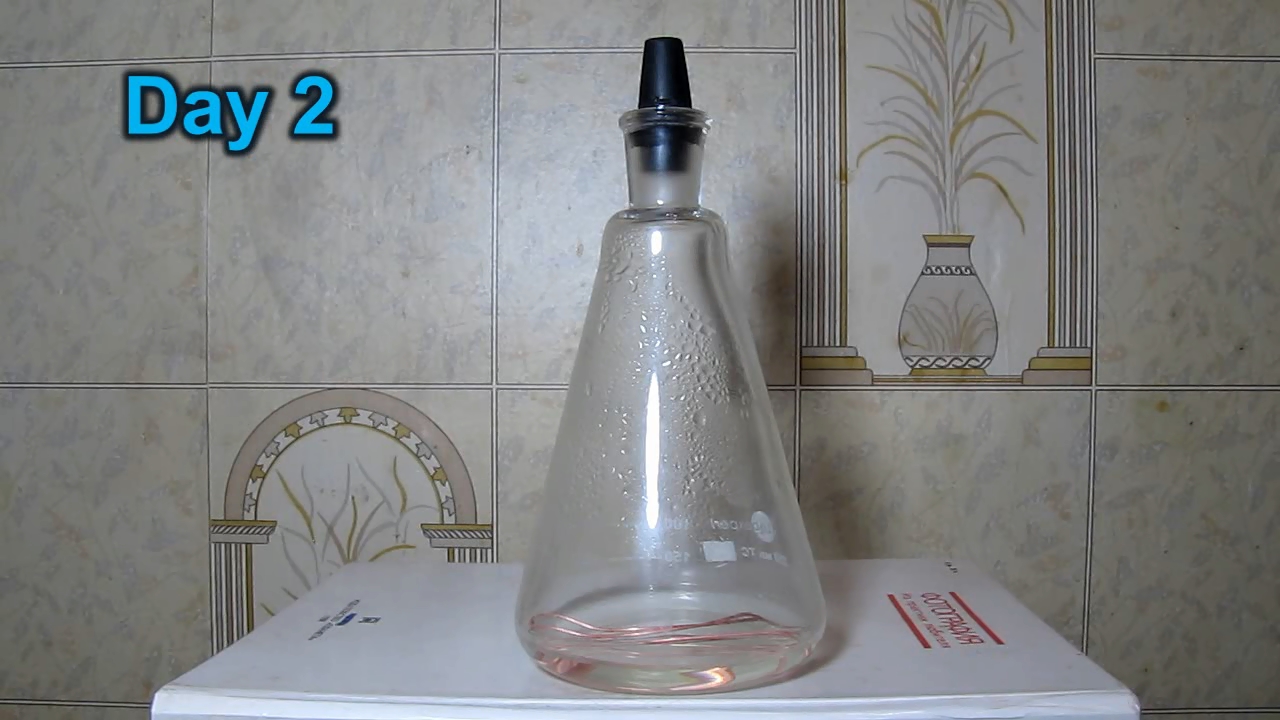
|
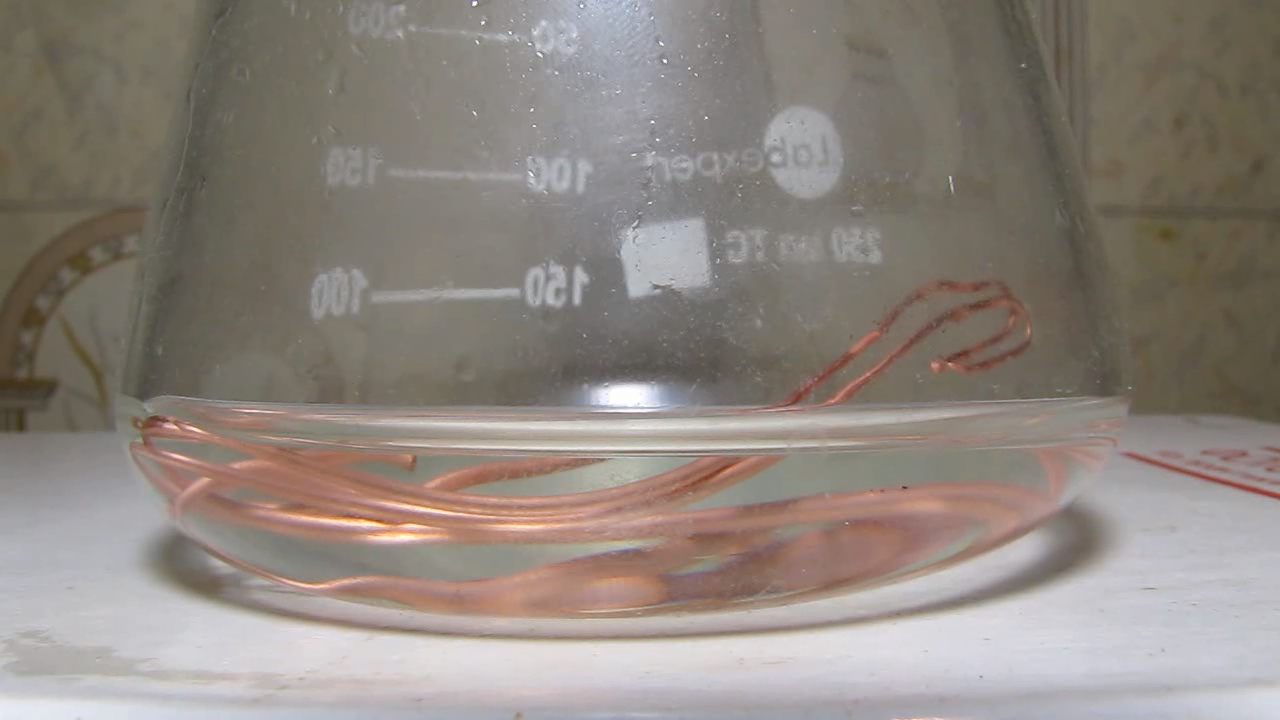
|
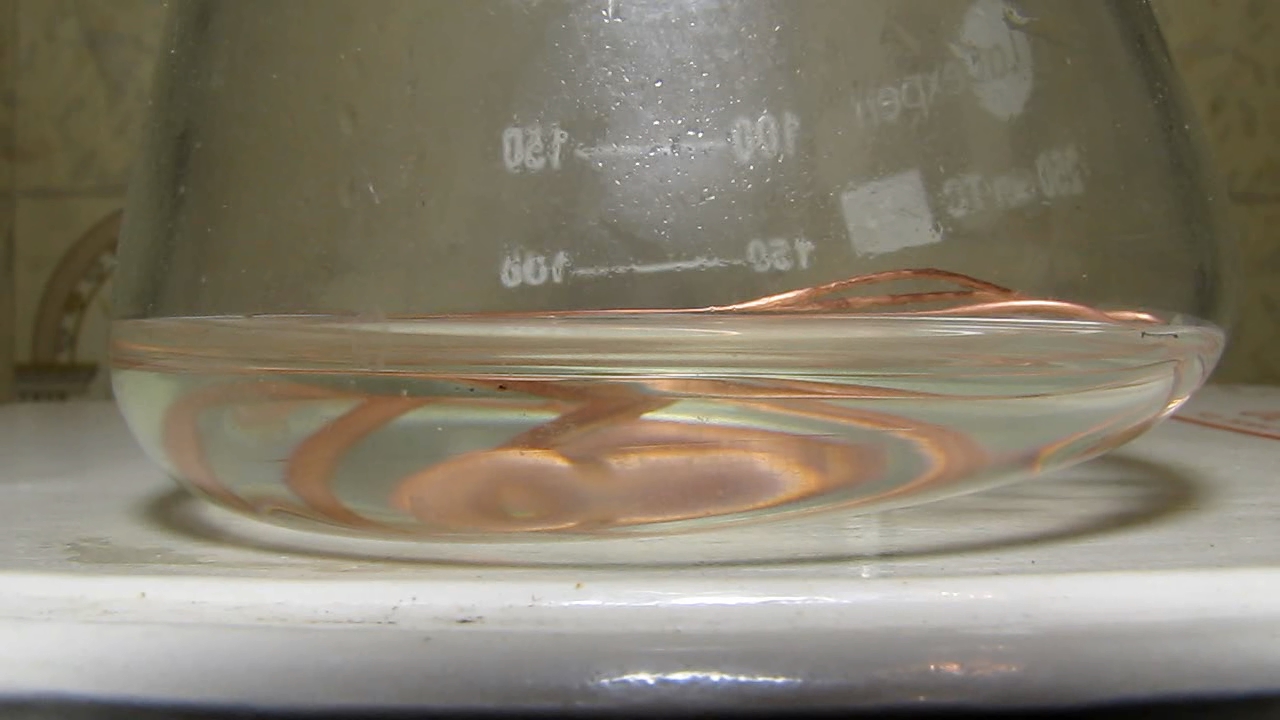
|

|
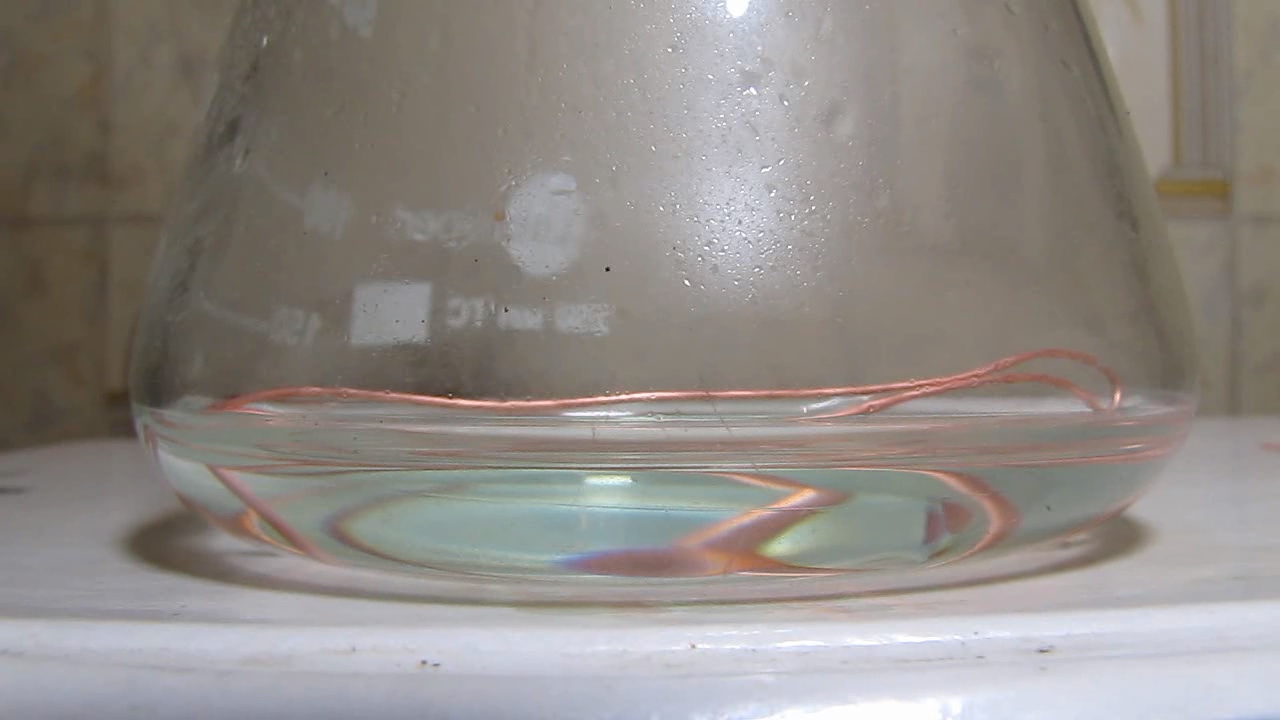
|
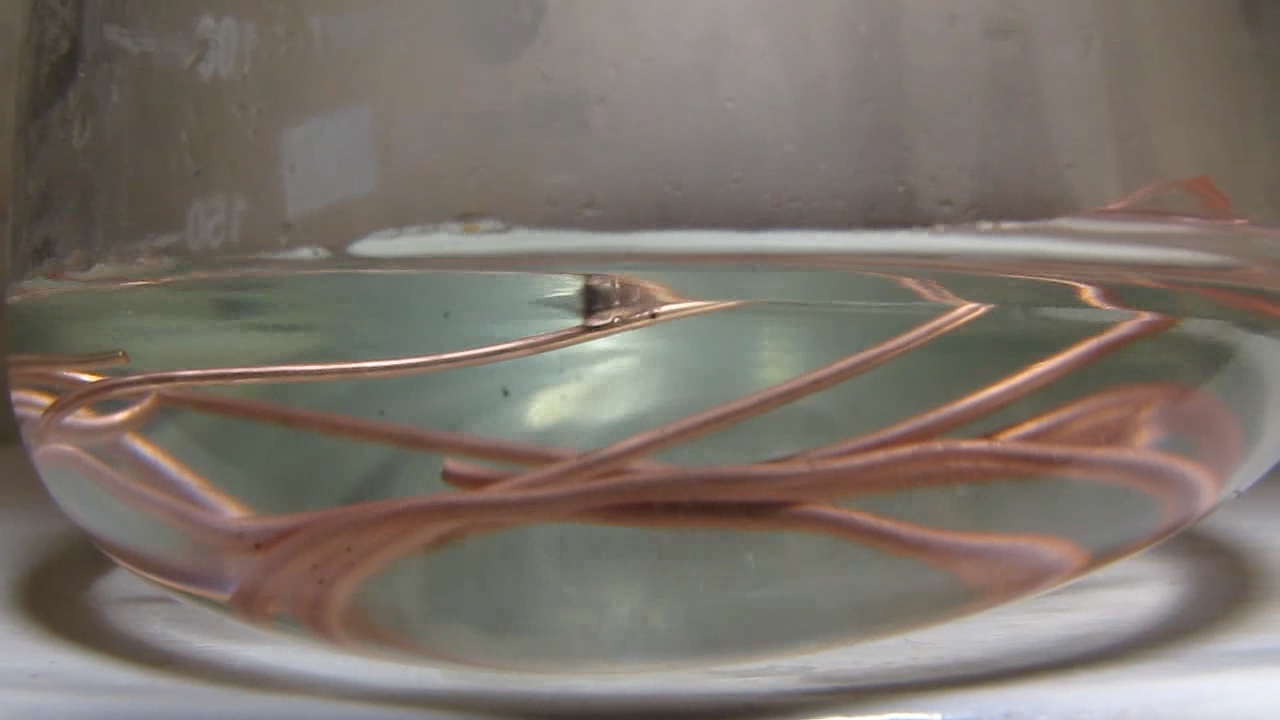
|
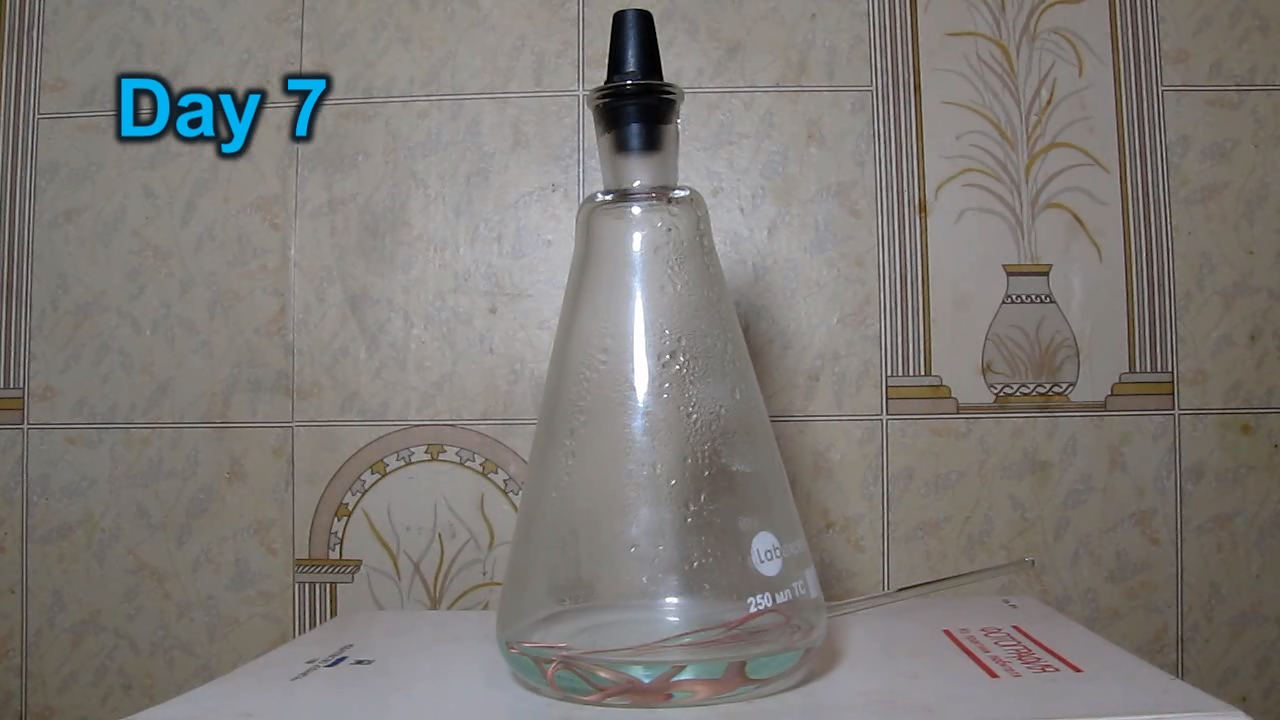
|
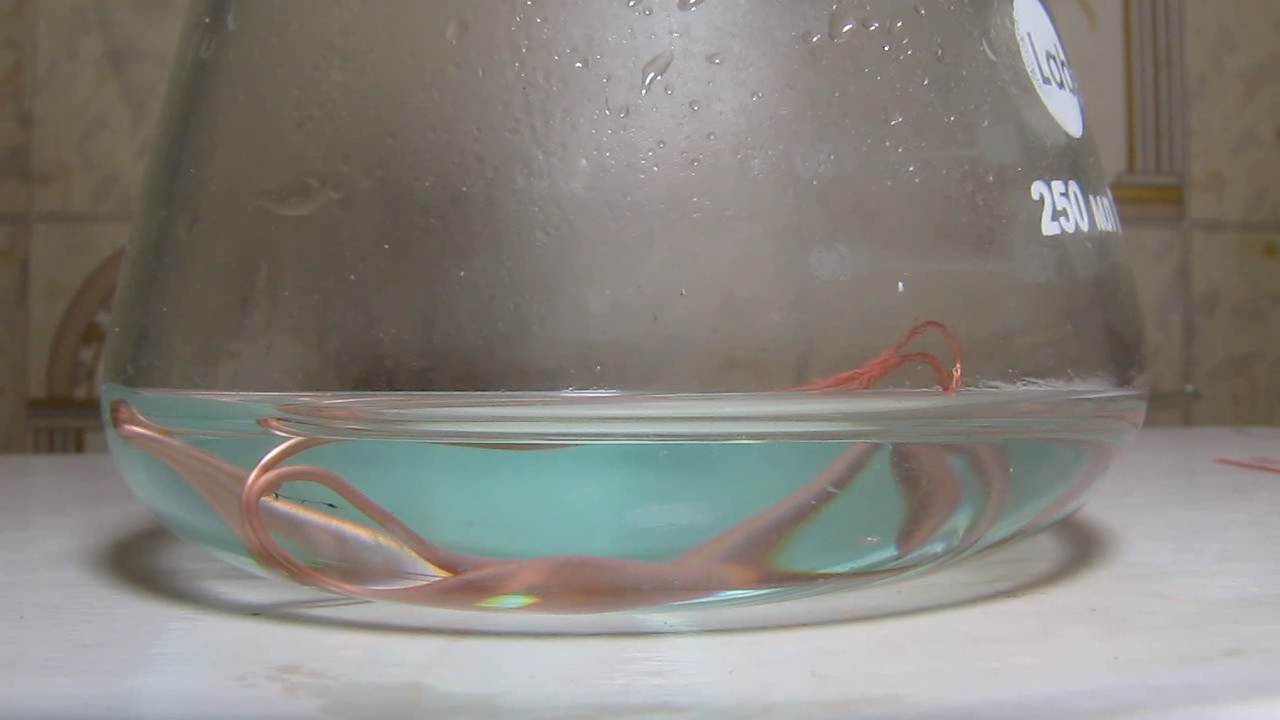
|

|
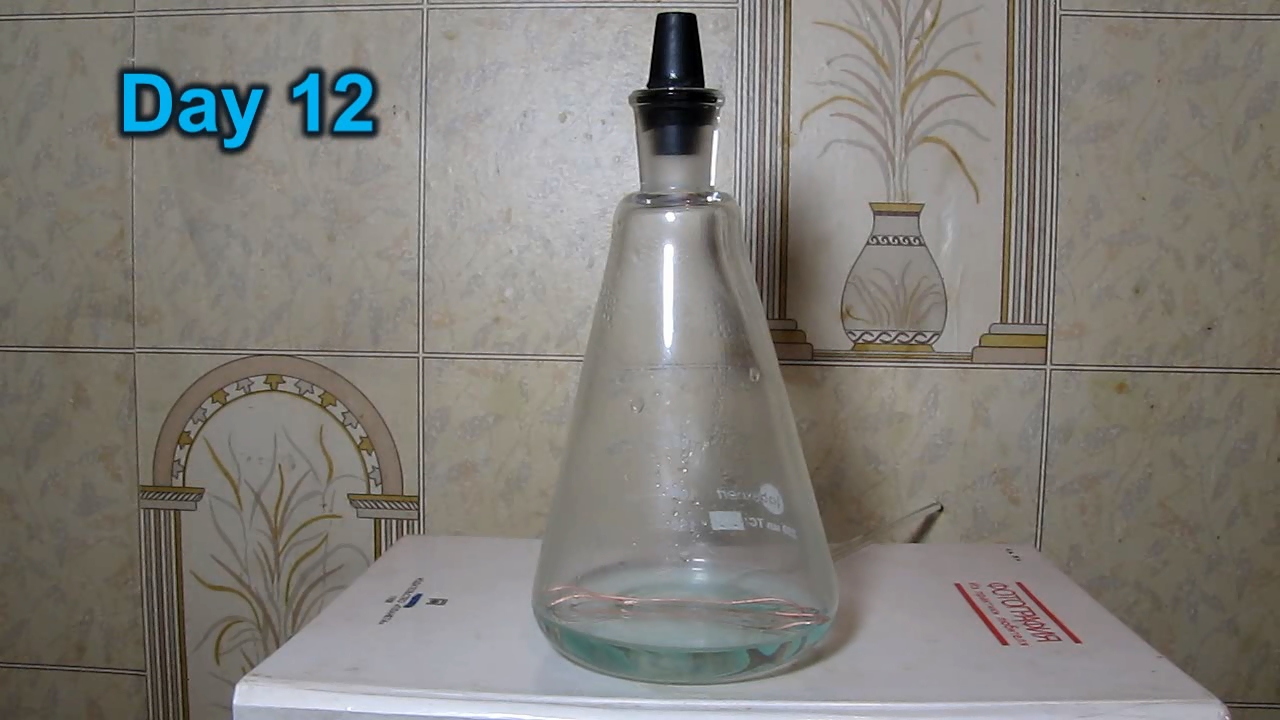
|
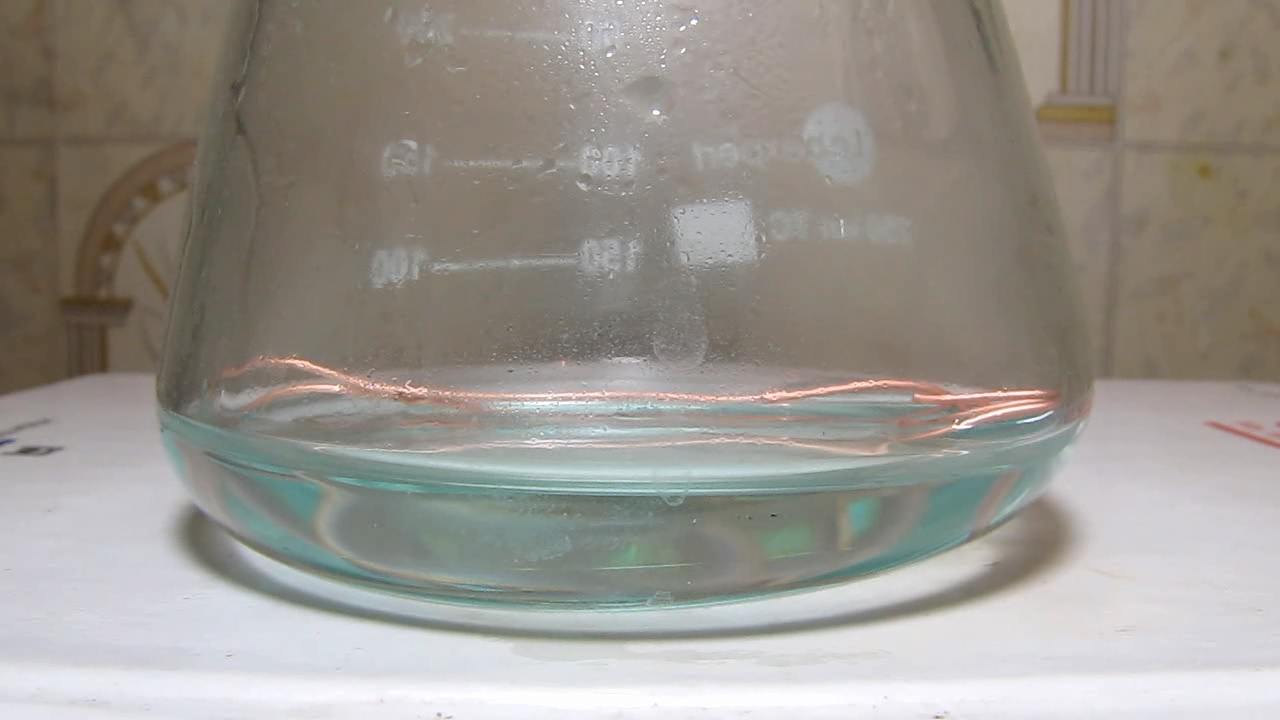
|
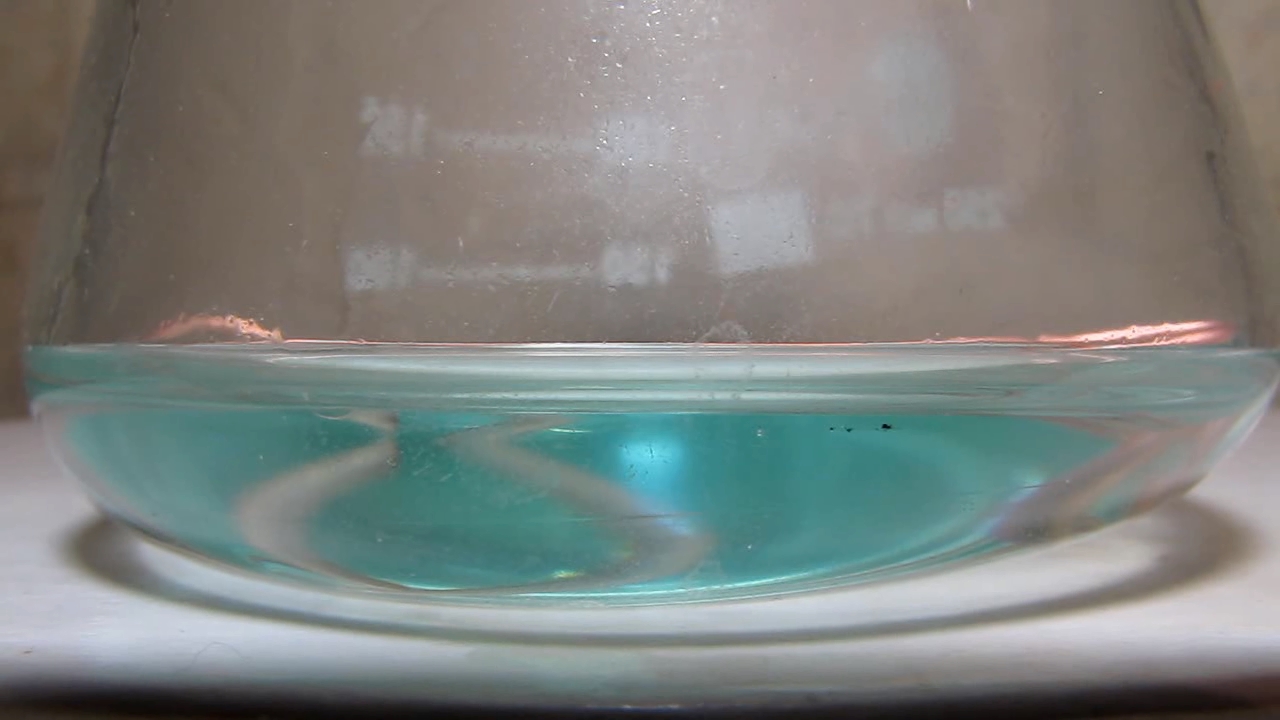
|
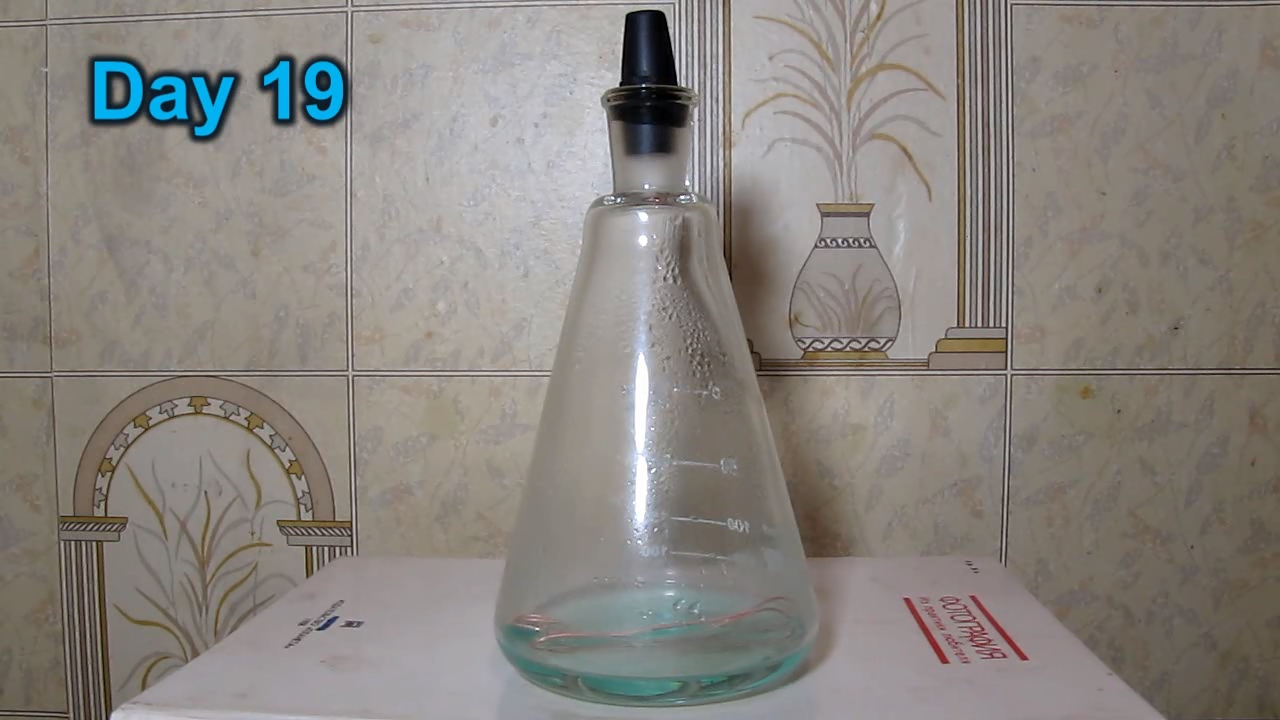
|
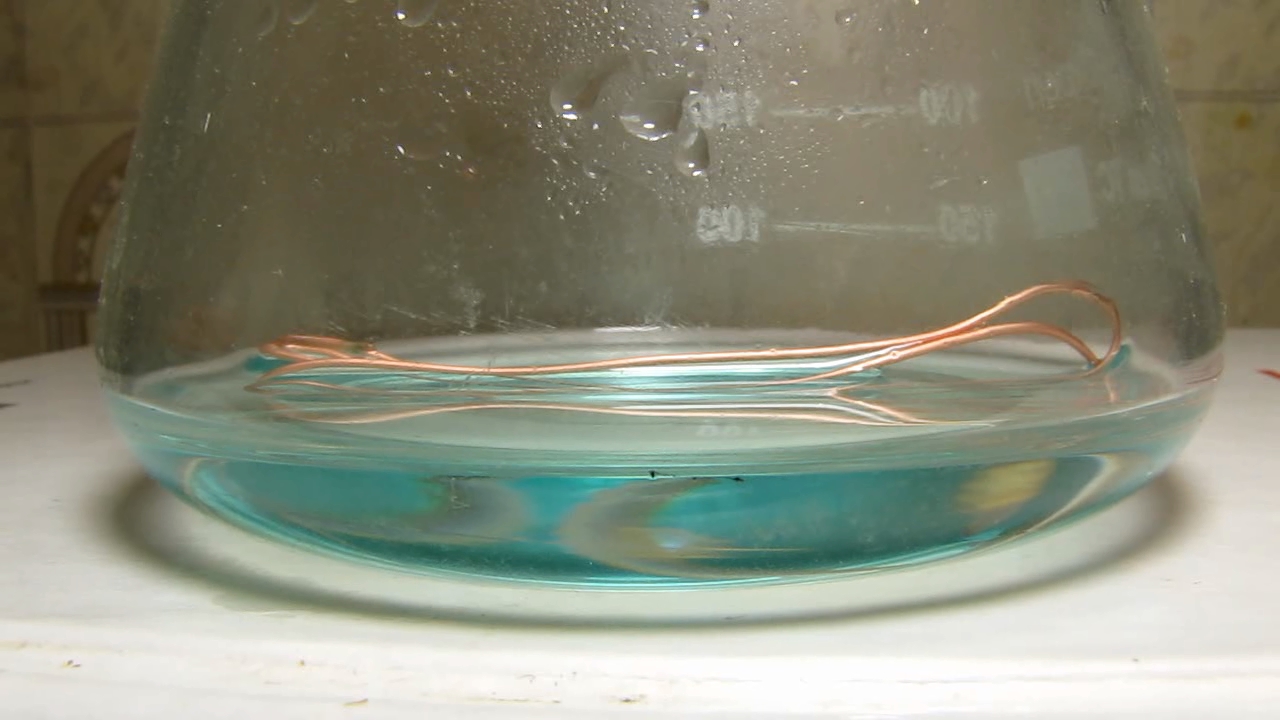
|
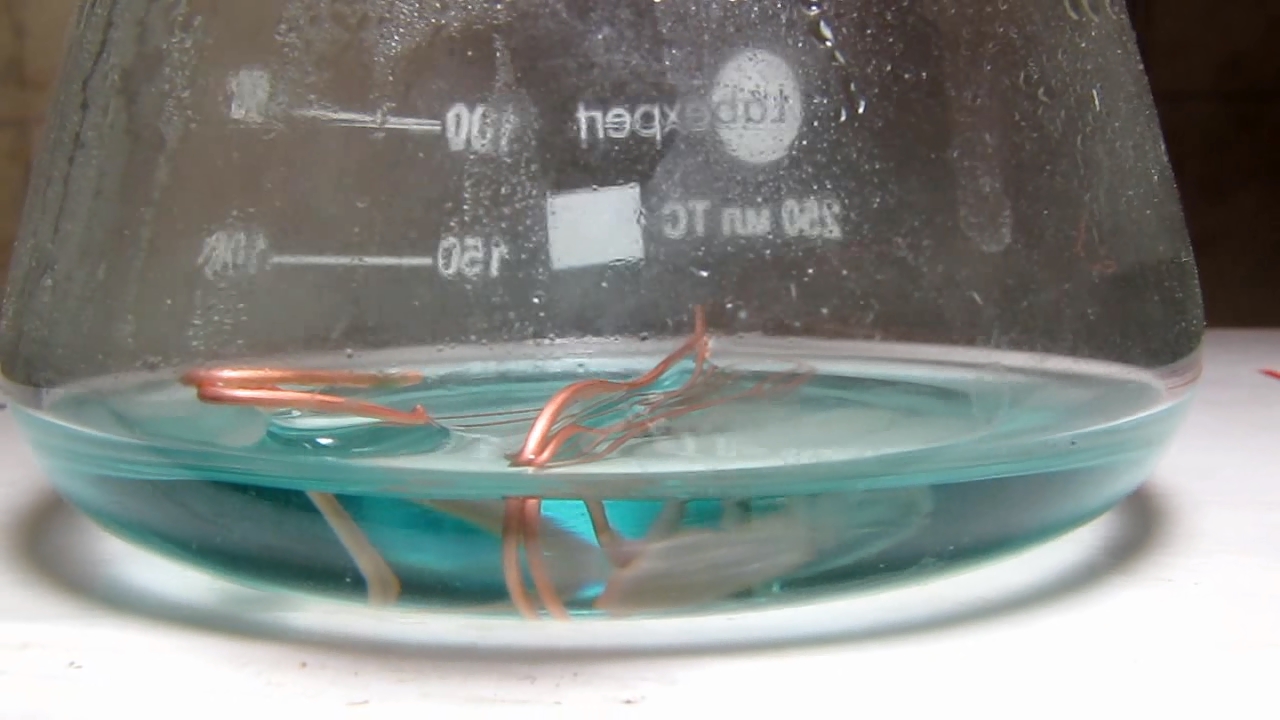
|

|

|
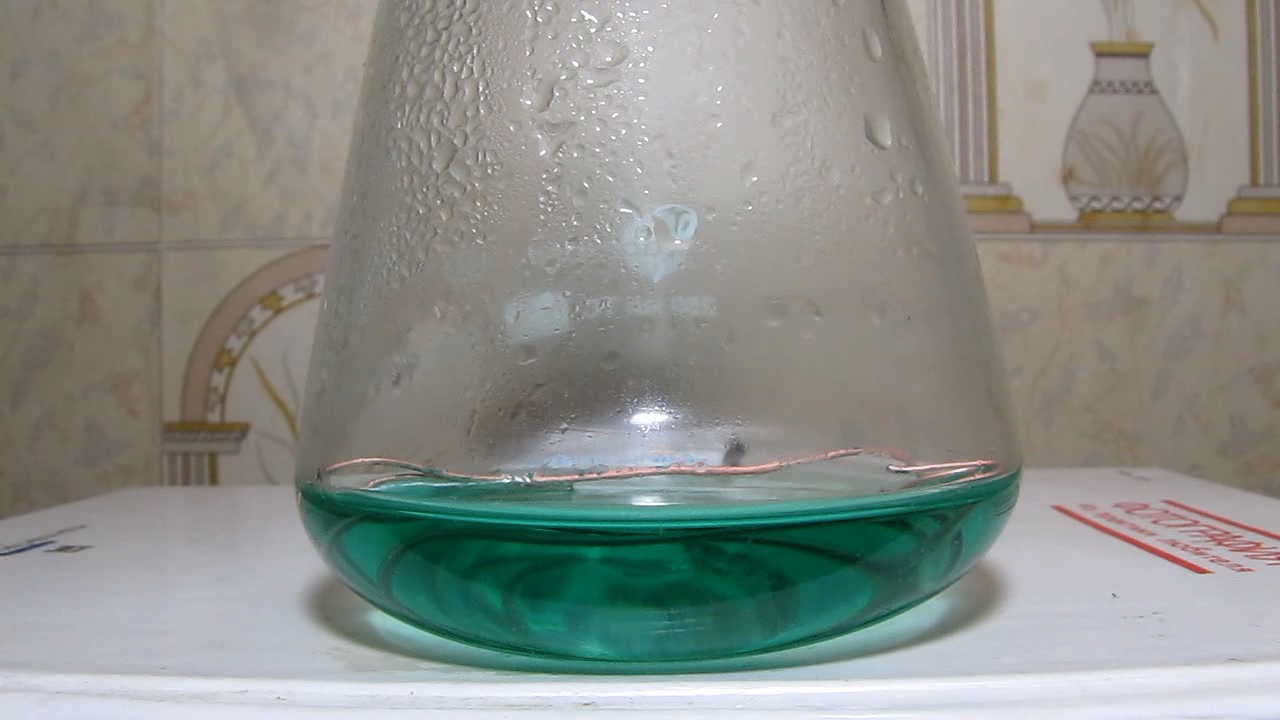
|
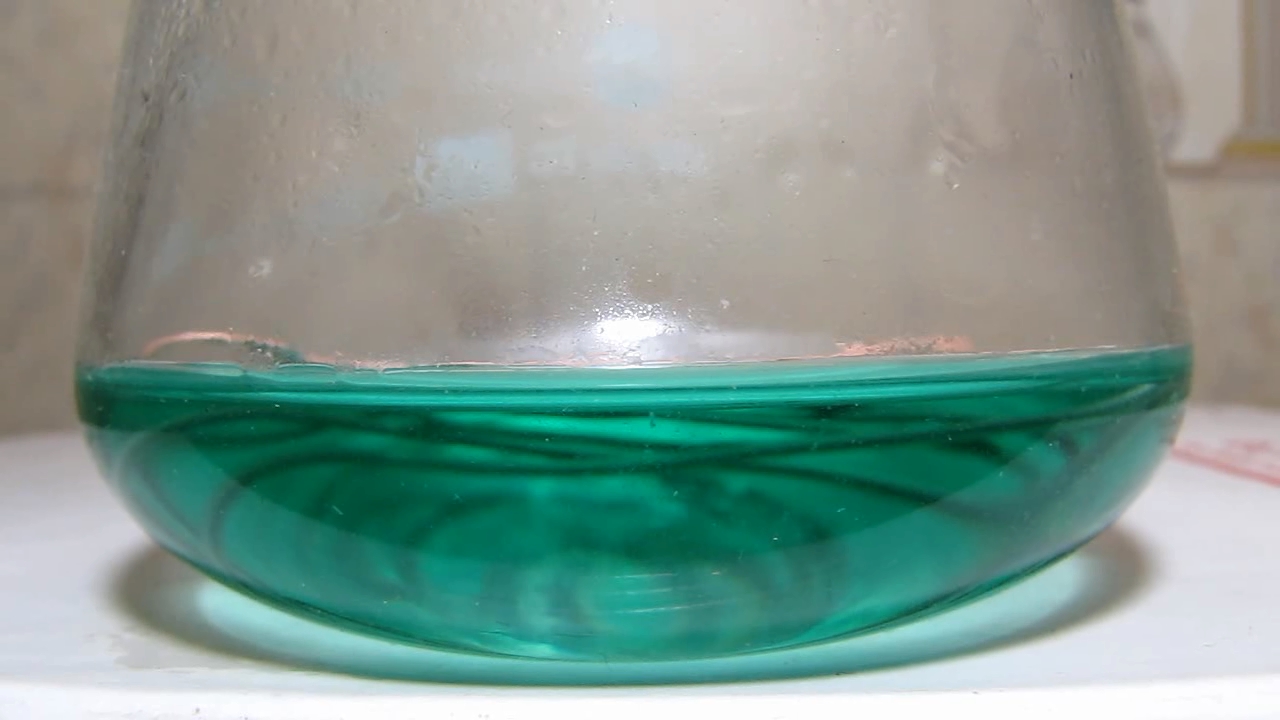
|
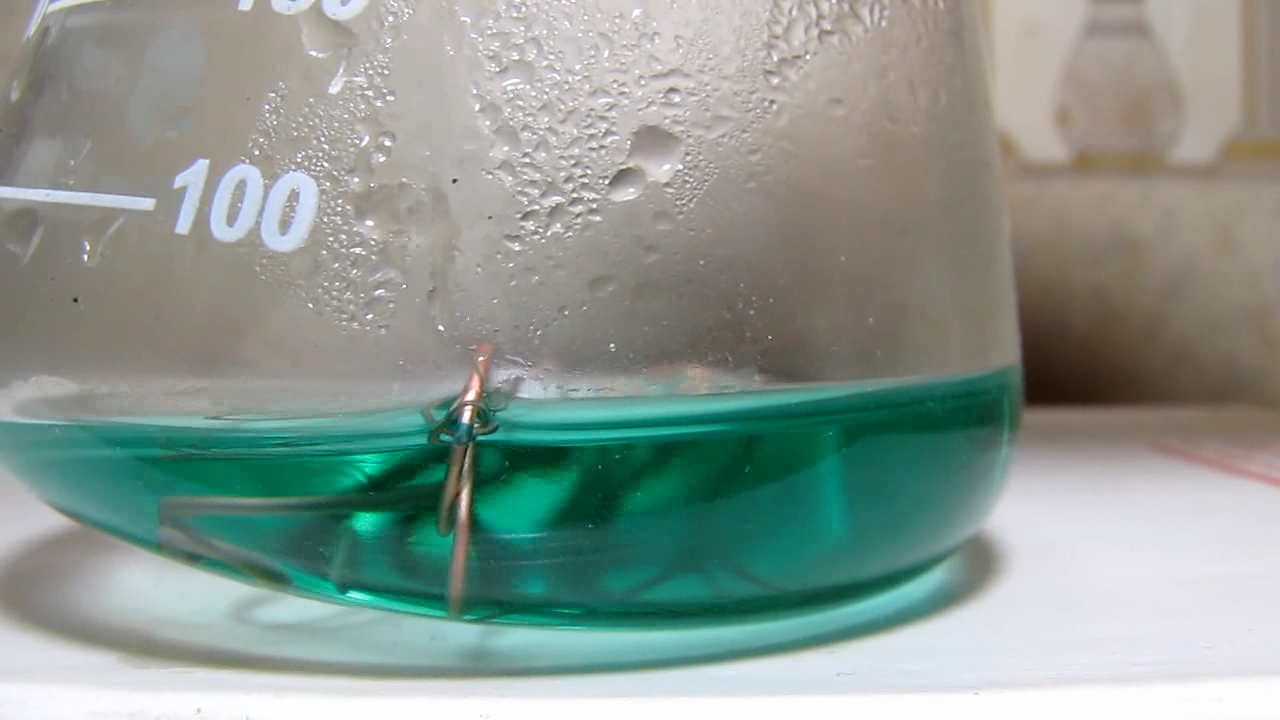
|
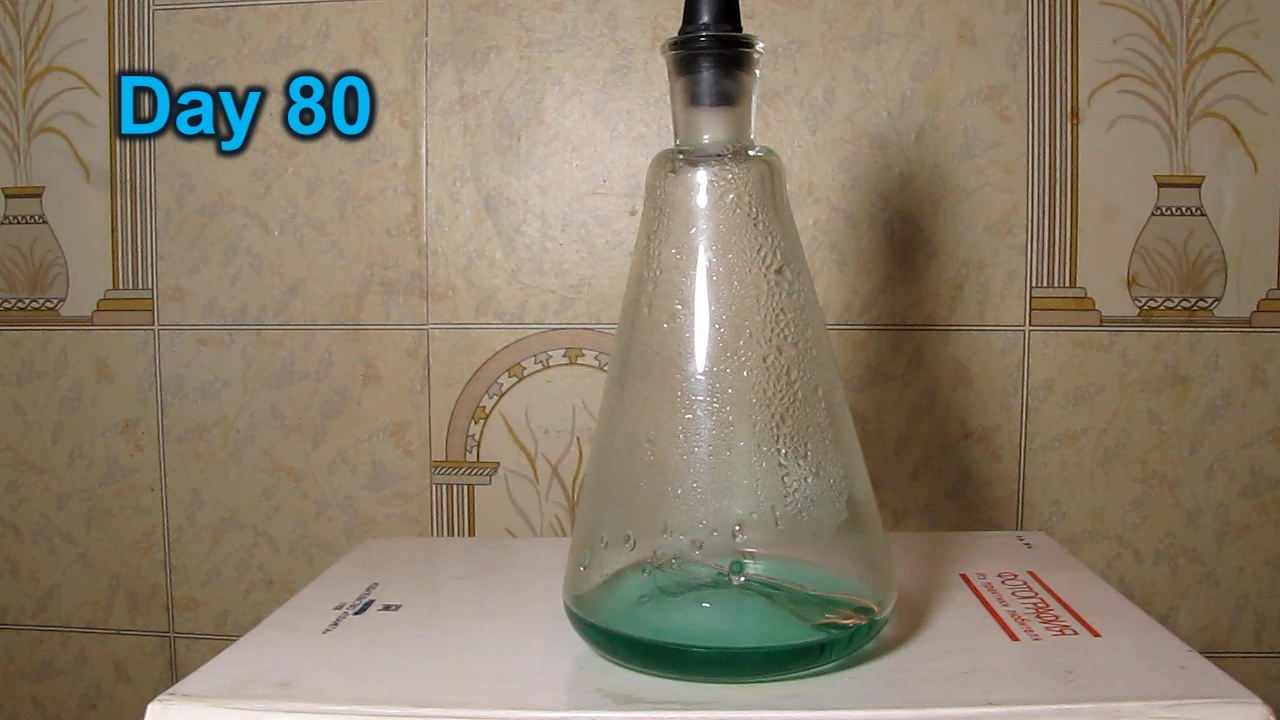
|

|
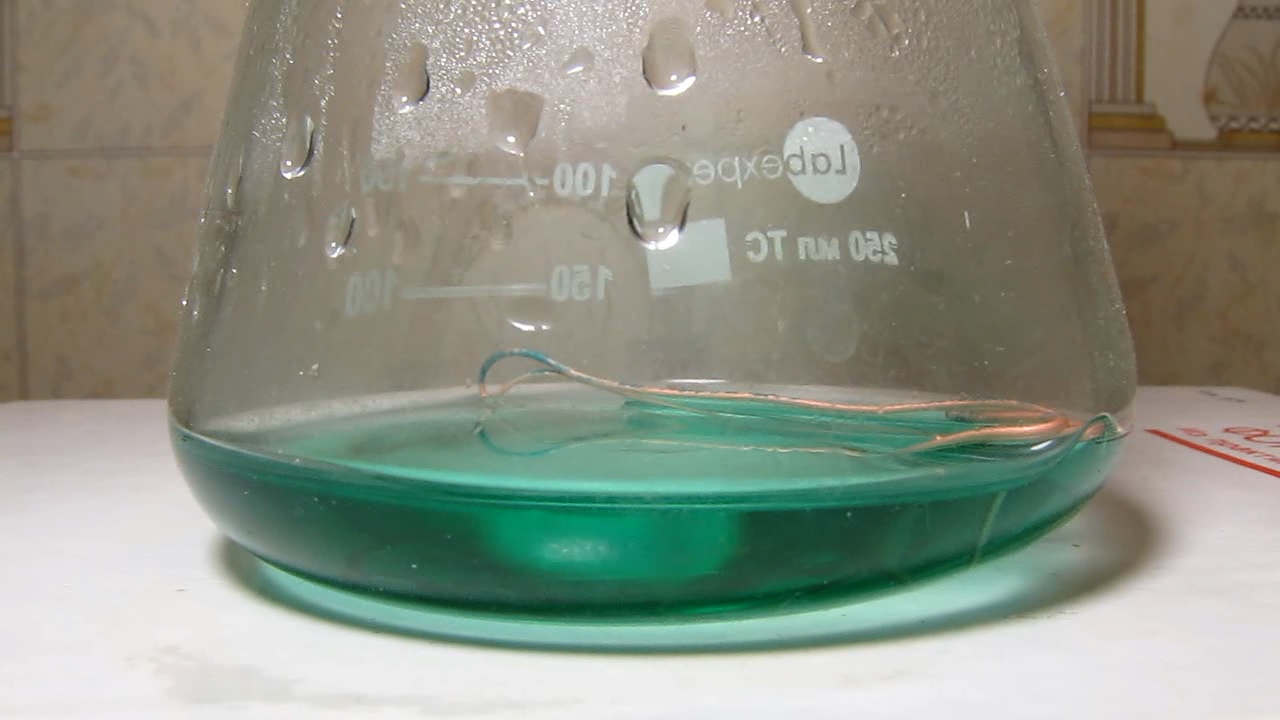
|

|
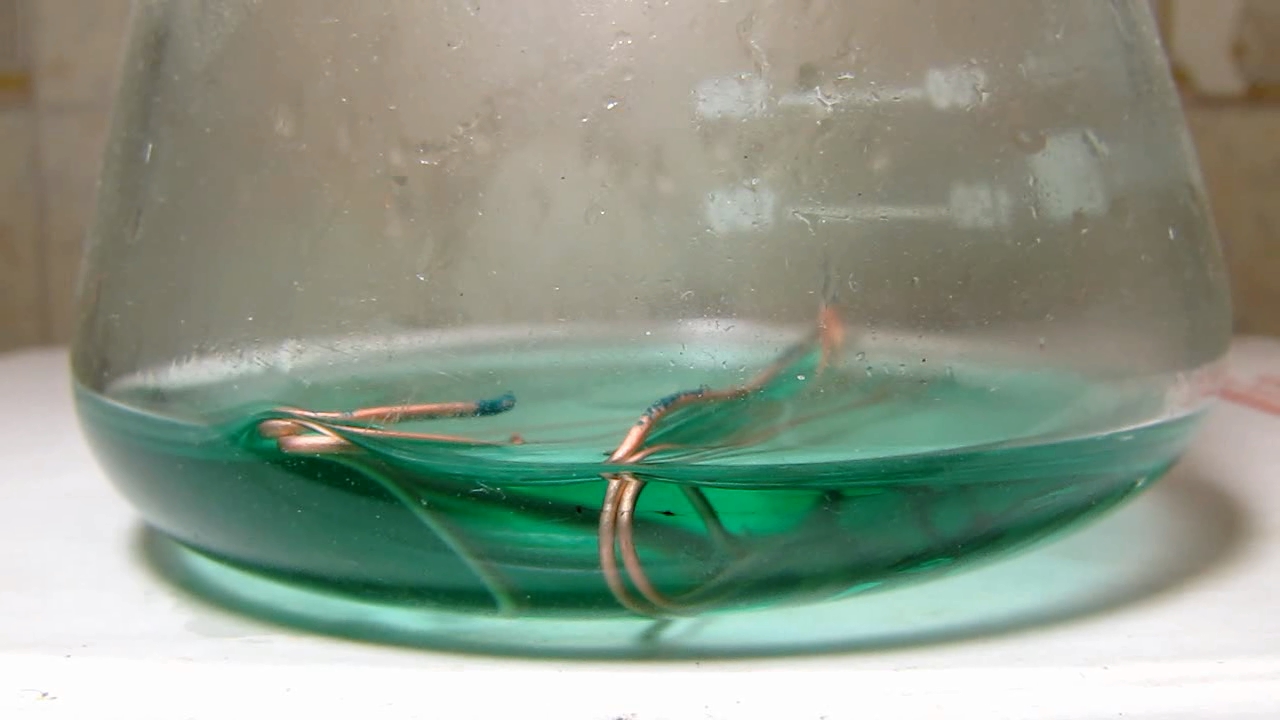
|

|

|
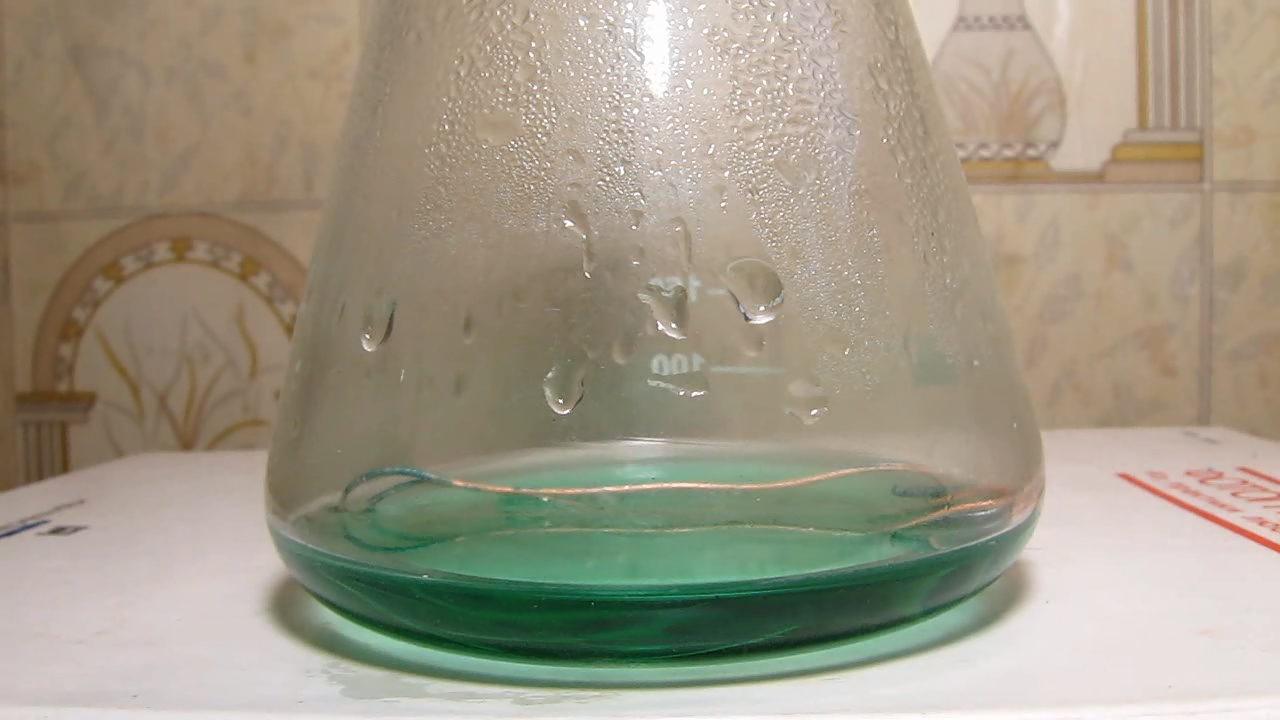
|
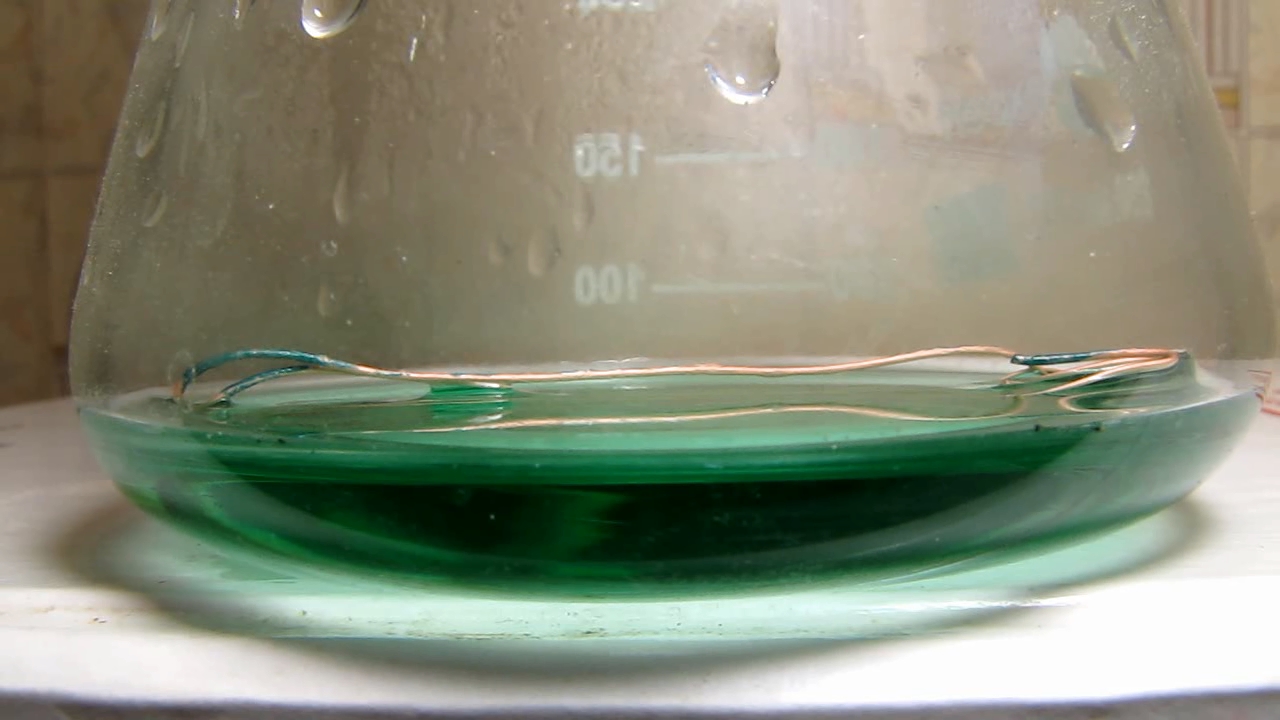
|
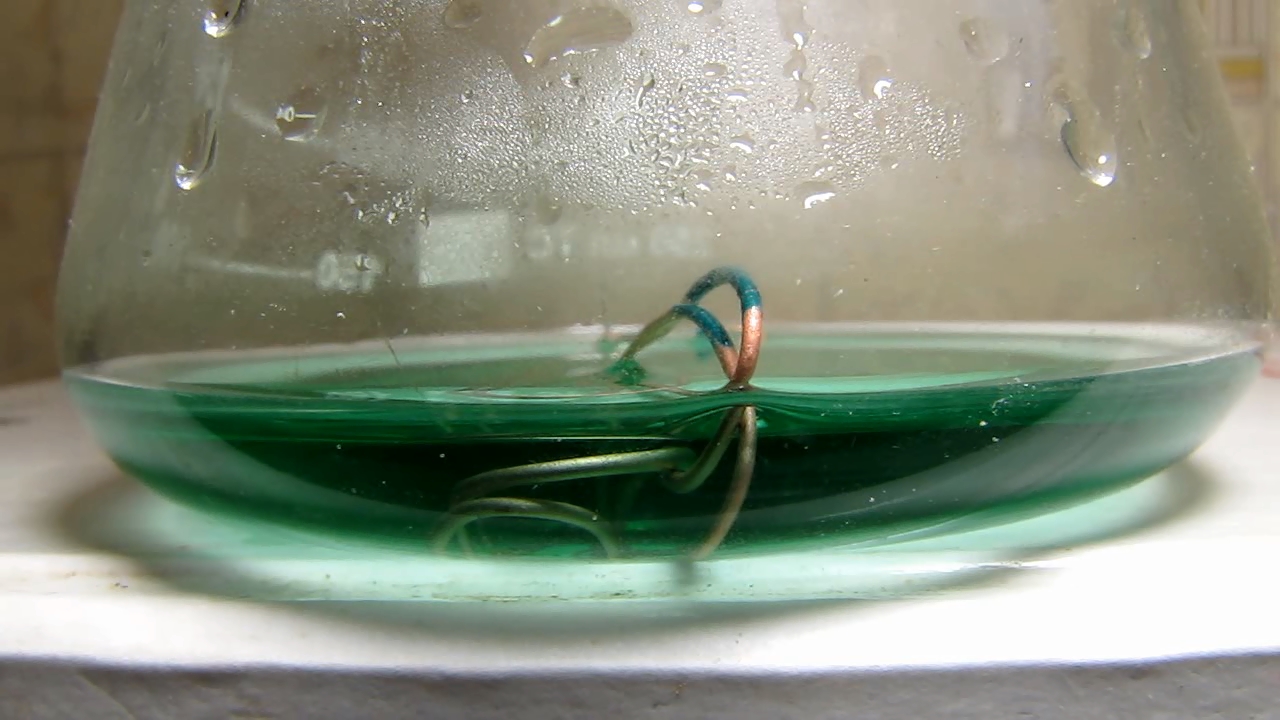
|
|
Having noticed a mistake in the text, allocate it and press Ctrl-Enter
Reaction of copper citrate with potassium hydroxide - part 2
As a result of the dissolution of copper metal in citric acid, a copper citrate solution containing the excess of citric acid was formed. The question arose, what experiments can be carried out with this solution? The first idea was to do the reaction of copper citrate with a strong alkali.
Реакция цитрата меди и гидроксида калия - часть 2 The reader may object: what is the value of such experiments? In general, we take a solution of copper (II) salt and precipitate copper hydroxide with an alkali. Copper sulfate, copper chloride, copper nitrate, etc. can be used for this purpose - the anion does not play a significant role. In all of the above cases, blue copper hydroxide is formed. Many people have seen such experiments in school. What difference does it make whether we use copper sulfate or copper citrate? There really is not much difference between copper sulfate, chloride and nitrate in this case. Therefore, equations for such reactions are often written as ionic equations (in "shortened form"), without indicating the spectator anion: Cu2+ +2OH- = Cu(OH)2 However, in the case of citrate, the situation is more complicated. In a past experiment, I discovered that when potassium hydroxide is added to an aluminium citrate solution, an aluminium hydroxide precipitate does NOT form [2]. Although this result was unexpected, it is easy to explain. Moreover, this result could have been predicted (if I had thought outside the box instead of following templates). The fact is that the citric acid anion forms strong complexes with some metals; for this reason, aluminium hydroxide does not precipitate when alkali is added to aluminium citrate. Similar behaviour should be expected from copper citrate. Moreover, I worked in an electroplating workshop where there was a production line for metalizing ABS plastic. One of the baths in this line was filled with a strongly alkaline solution that contained Rochelle salt and copper sulfate. The tartaric acid anion forms a blue complex with copper, so copper hydroxide did not precipitate. The citric acid anion will probably behave in the same way. I dissolved 0.3 g of potassium hydroxide in 20 ml of distilled water, then added about a millilitre of the obtained copper citrate solution. The solution sank to the bottom, turning blue. I stirred the reaction mixture. A blue solution was formed. I submerged the indicator paper into it - the medium turned out highly alkaline. Thus, copper (II) forms a strong complex with the citrate anion, so the alkali does not precipitate copper (II) hydroxide from a copper citrate solution. __________________________________________________ 2 See the article Do alkalis break down aluminium citrate? [link]. |
|
Реакция цитрата меди и гидроксида калия - часть 2
В результате растворения металлической меди в лимонной кислоте образовался раствор цитрата меди, содержащий избыток лимонной кислоты. Возник вопрос, какие эксперименты можно осуществить с данным раствором? Первая мысль - провести реакцию цитрата меди с сильной щелочью.
Читатель может возразить: какая ценность подобных экспериментов? В общем случае мы берем раствор соли меди (II) и осаждаем гидроксид меди щелочью. Для этой цели можно использовать сульфат меди, хлорид меди, нитрат меди и т.д. - анион существенной роли не играет. Во всех приведенных случаях образуется голубой гидроксид меди. Такие эксперименты многие видели еще в школе. Какая разница, возьмем мы сульфат меди или цитрат меди? Между сульфатом, хлоридом и нитратом меди в данном случае большой разницы действительно нет. Поэтому уравнения подобных реакций часто пишут в ионной ("сокращенной") форме, не указывая анион, который фактически не принимает участия в реакции: Cu2+ +2OH- = Cu(OH)2 Однако, с цитратом дело обстоит сложнее. В одном из прошлых экспериментов я обнаружил, что при добавлении гидроксида калия к раствору цитрата алюминия осадок гидроксида алюминия НЕ образуется [2]. Несмотря на то, что данный результат стал неожиданностью, объяснить его легко. Более того, такой результат можно было предвидеть (если бы я думал нестандартно вместо того, чтобы следовать шаблонам). Дело в том, что анион лимонной кислоты образует прочные комплексы с рядом металлов, по этой причине гидроксид алюминия не осаждается при добавлении к цитрату алюминия щелочи. Аналогичного поведения следует ожидать и от цитрата меди. Более того, я работал в гальваническом цеху, где была производственная линия металлизации пластика ABS. В одной из ванн этой линии находился сильнощелочной раствор, который содержал сегнетову соль и сульфат меди. Анион винной кислоты образует с медью синий комплекс, поэтому гидроксид меди не осаждался. Вероятно, таким же образом будет вести себя и анион лимонной кислоты. Растворил 0.3 г гидроксида калия в 20 мл дистиллированной воды. Добавил около миллилитра полученного раствора цитрата меди. Раствор опустился на дно, окрасившись в синий цвет. Перемешал реакционную смесь. Образовался синий раствор, опустил в него индикаторную бумажку - среда сильнощелочная. Таким образом, медь (II) образует прочный комплекс с анионом цитрата, поэтому щелочь не осаждает гидроксид меди (II) из раствора цитрата меди. |

Copper citrate solution |
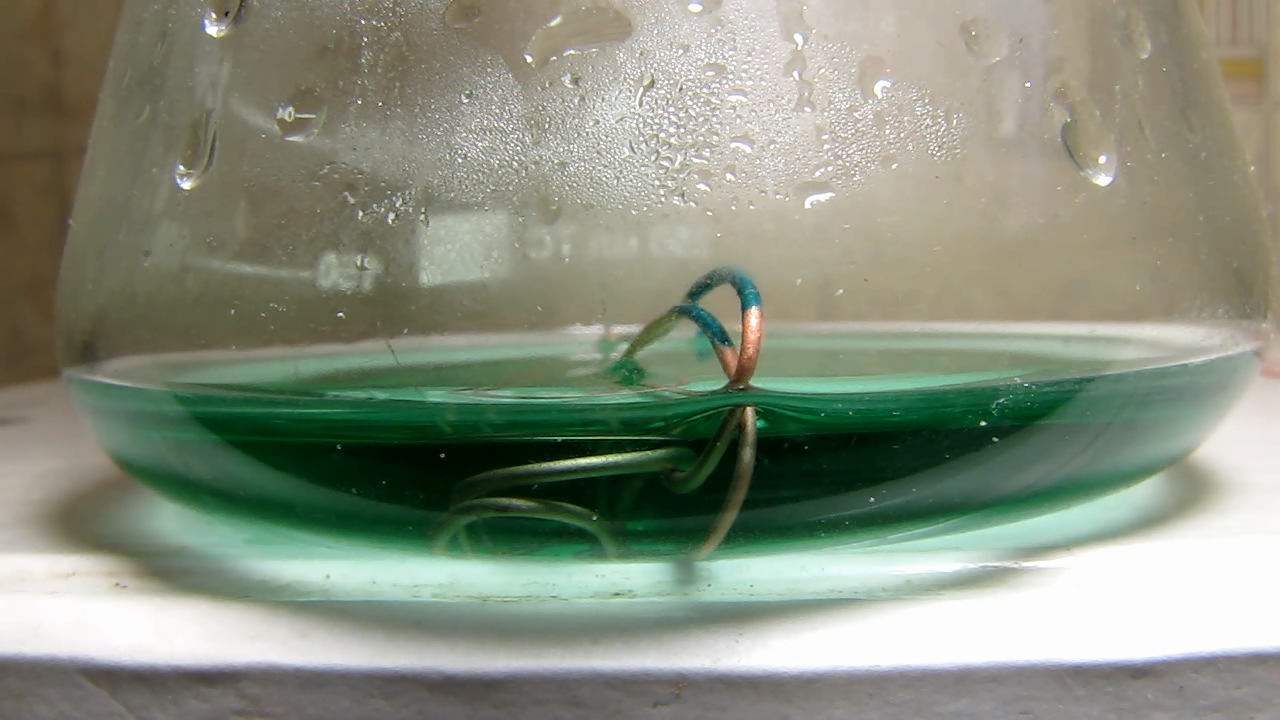
|

Reaction of copper citrate with potassium hydroxide |

|

|
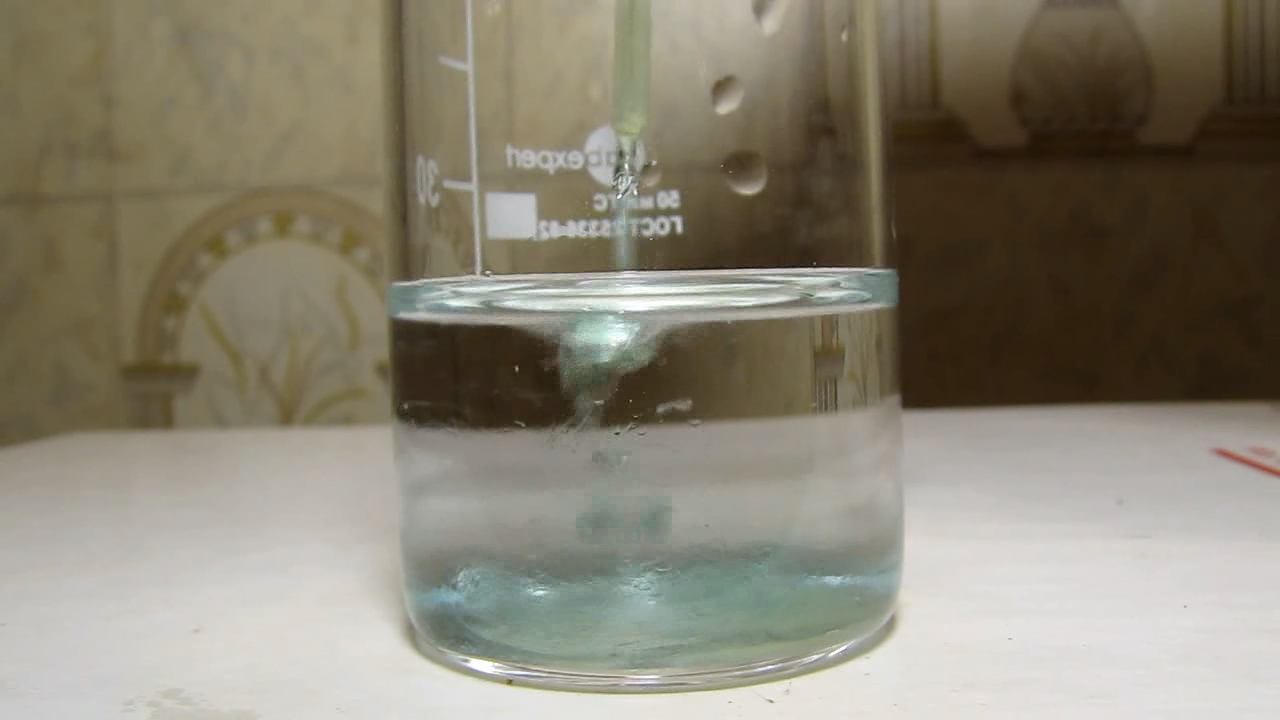
|
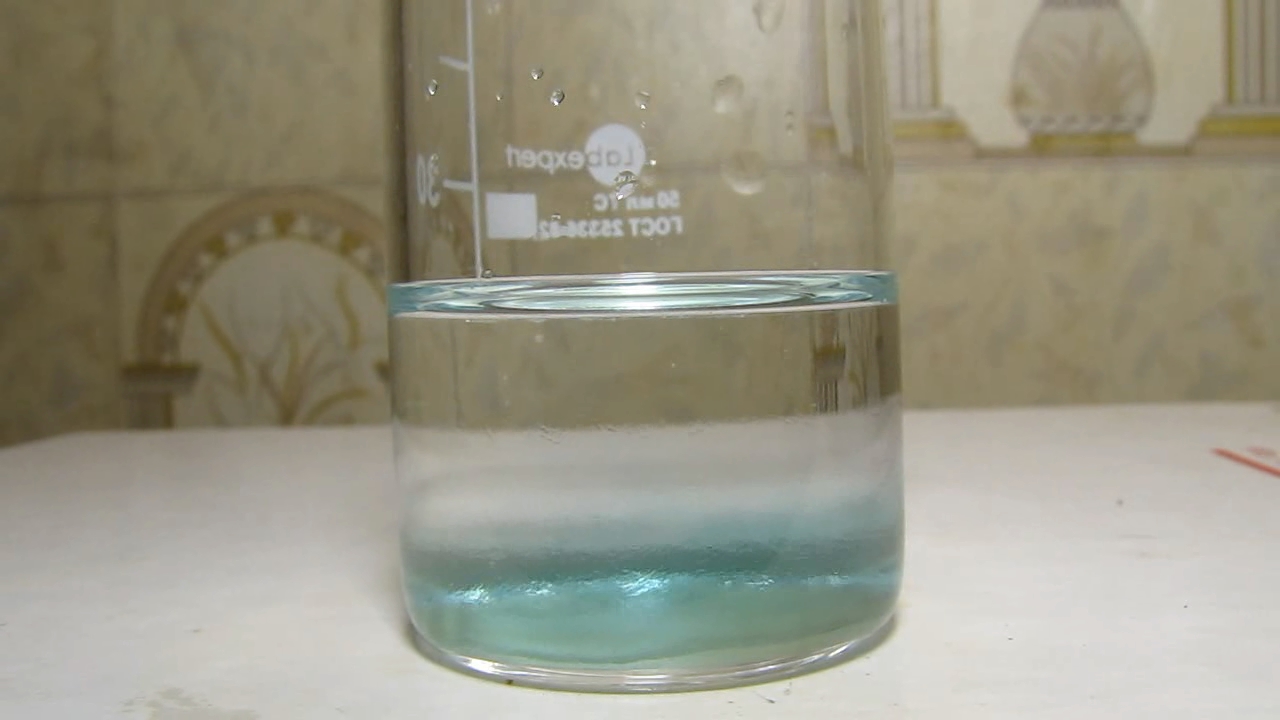
|
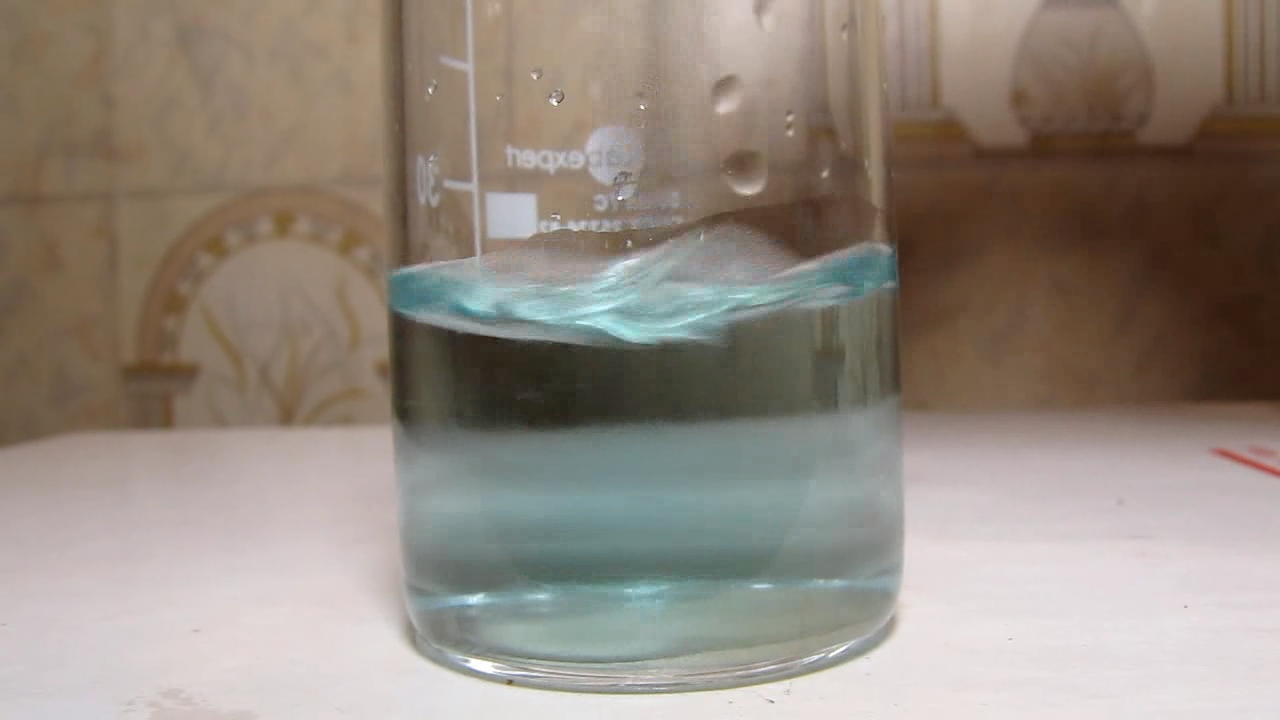
|
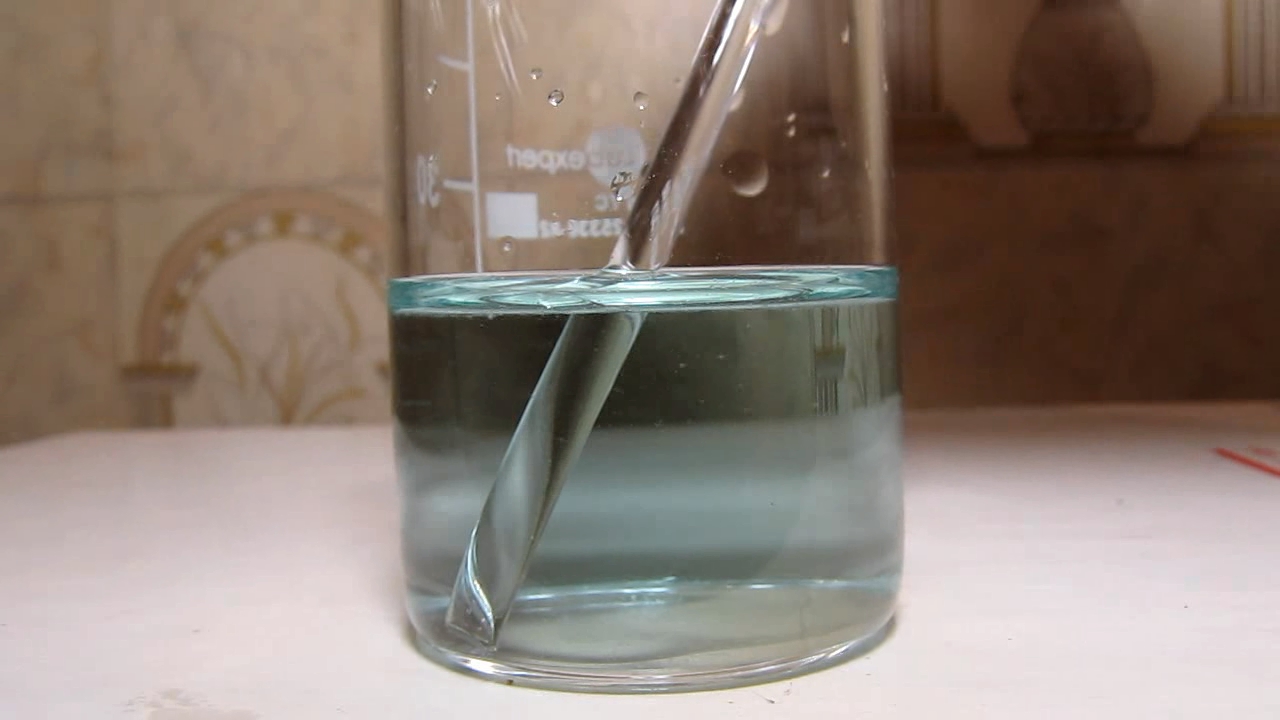
|
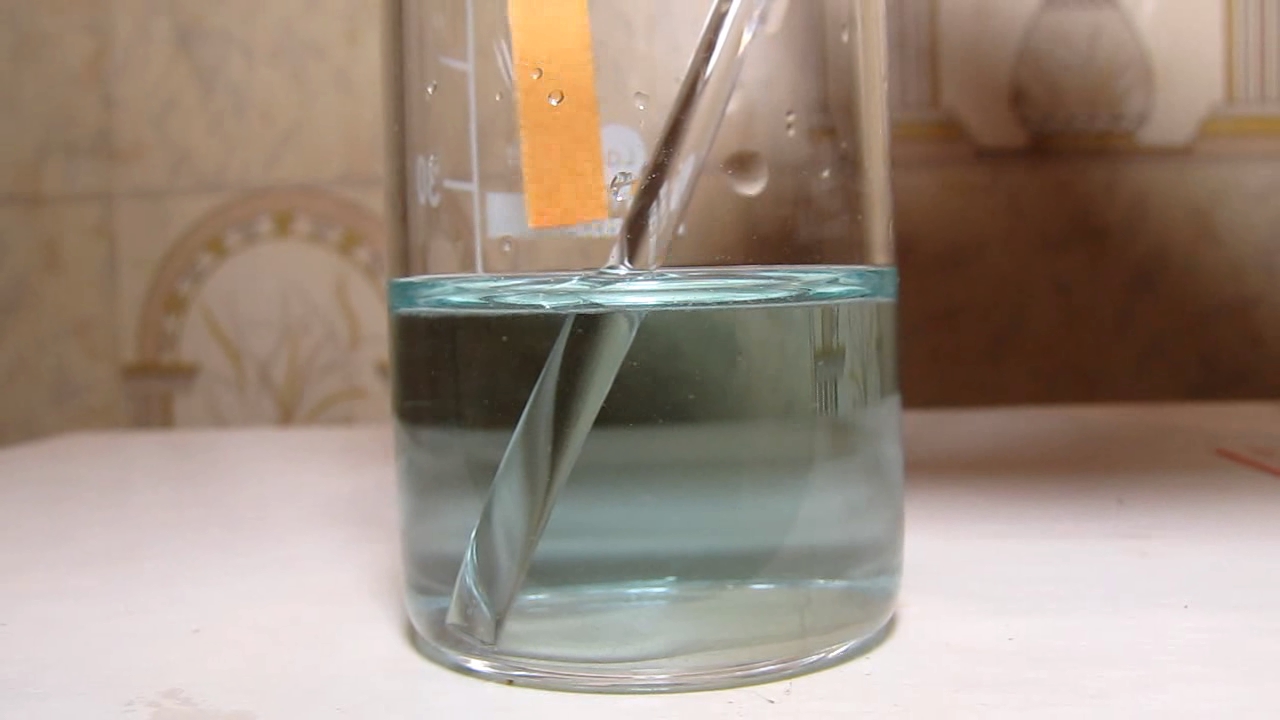
|

|

|
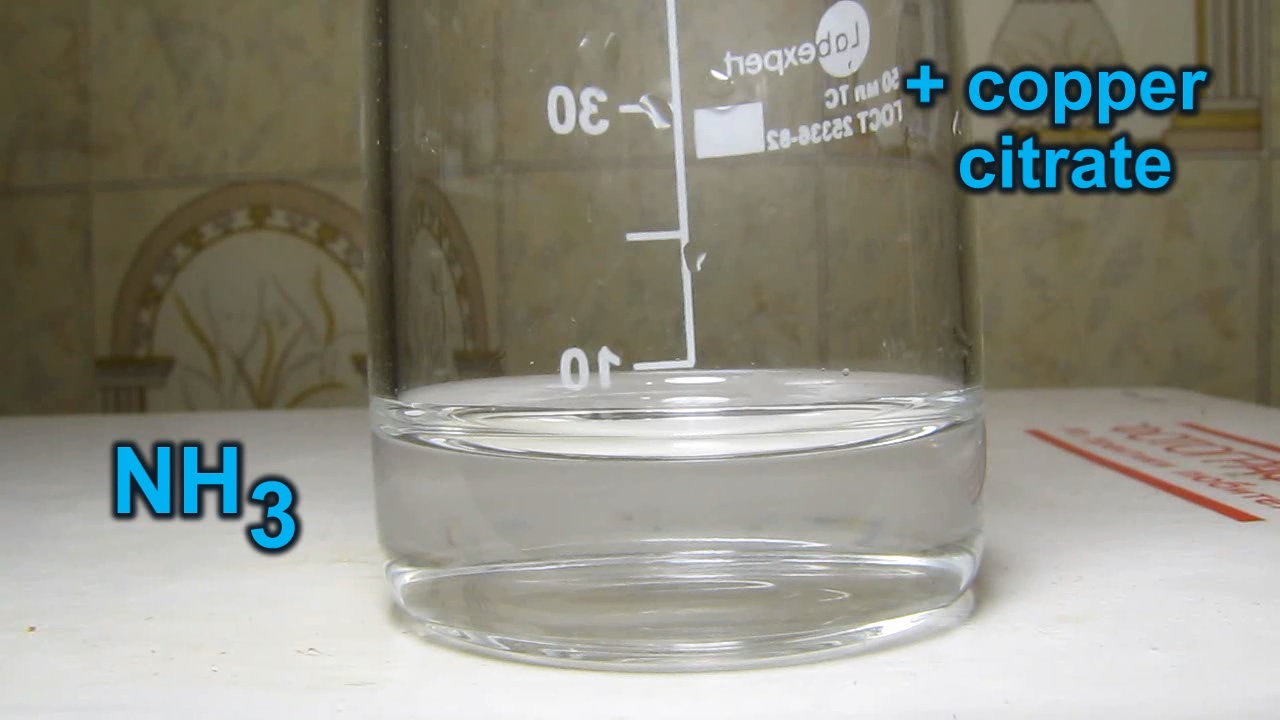
Reaction of copper citrate with an ammonia solution |
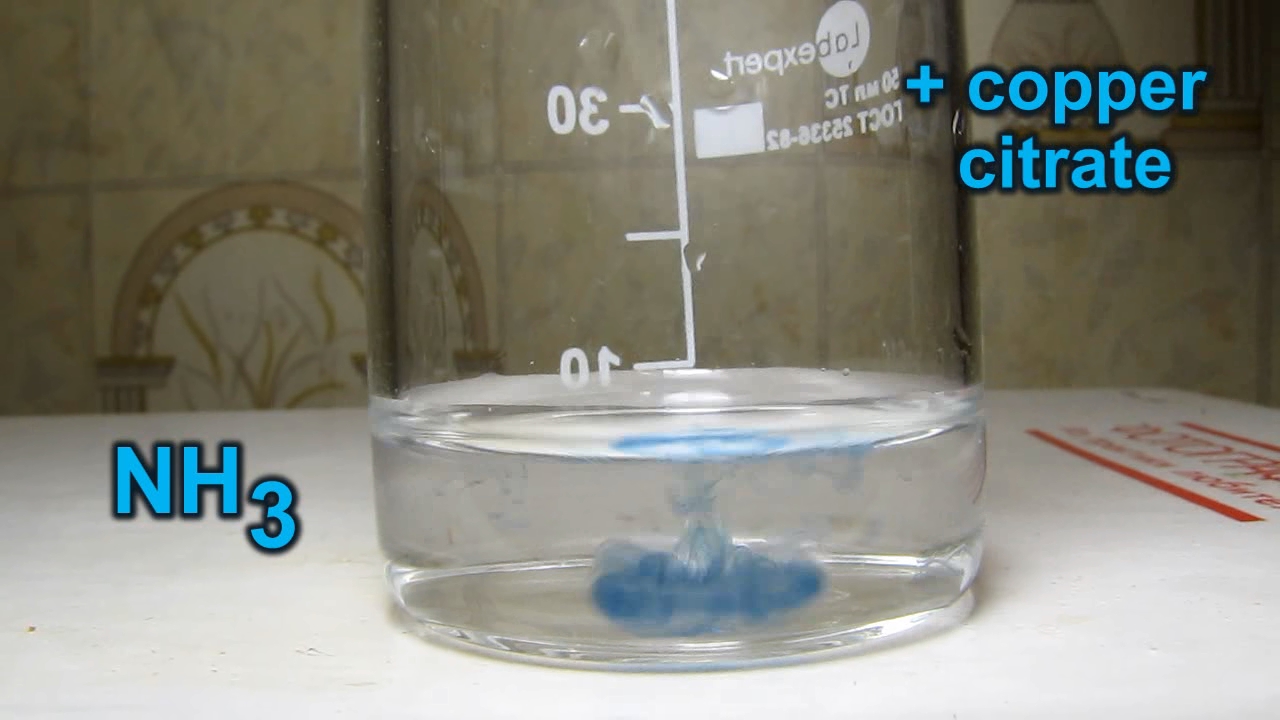
|

|
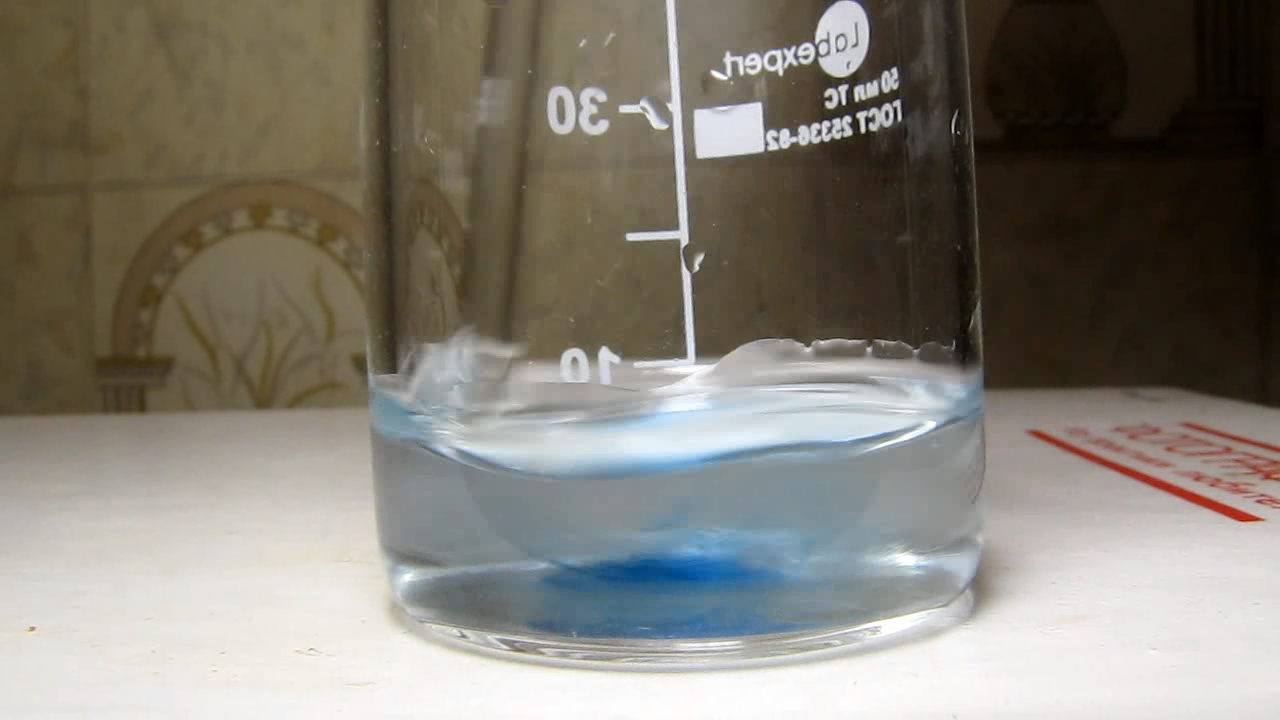
|
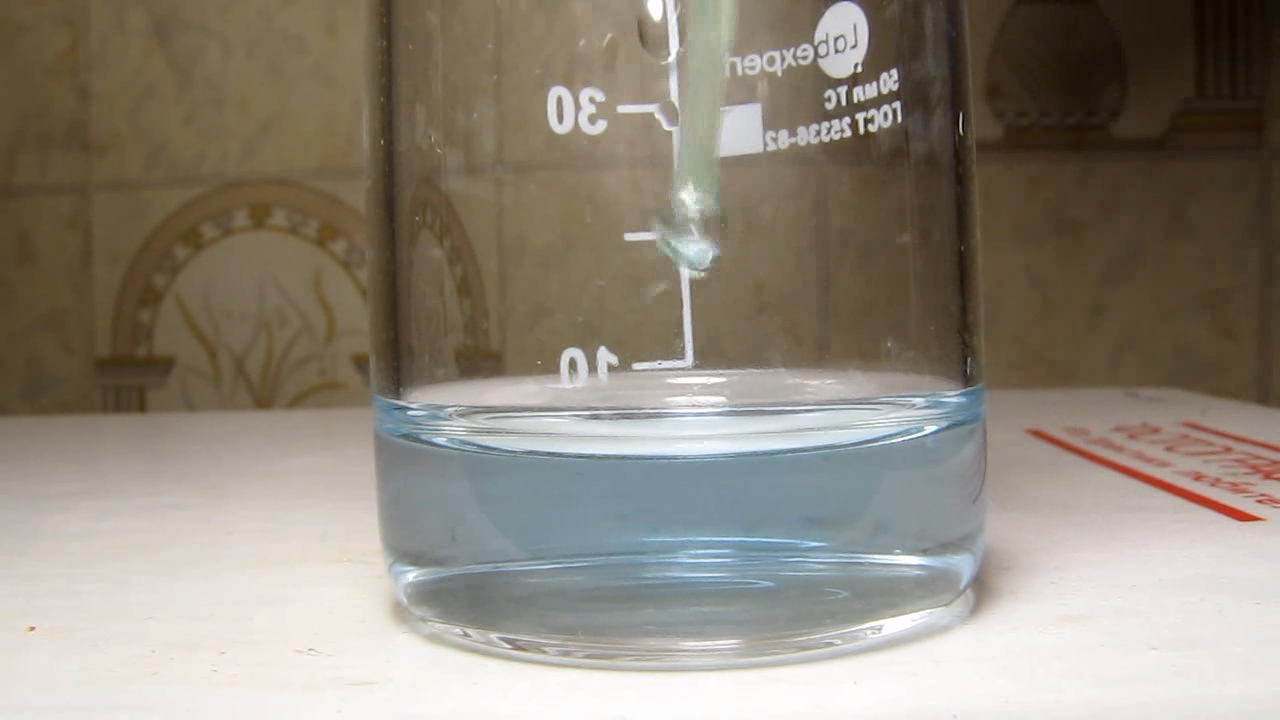
|
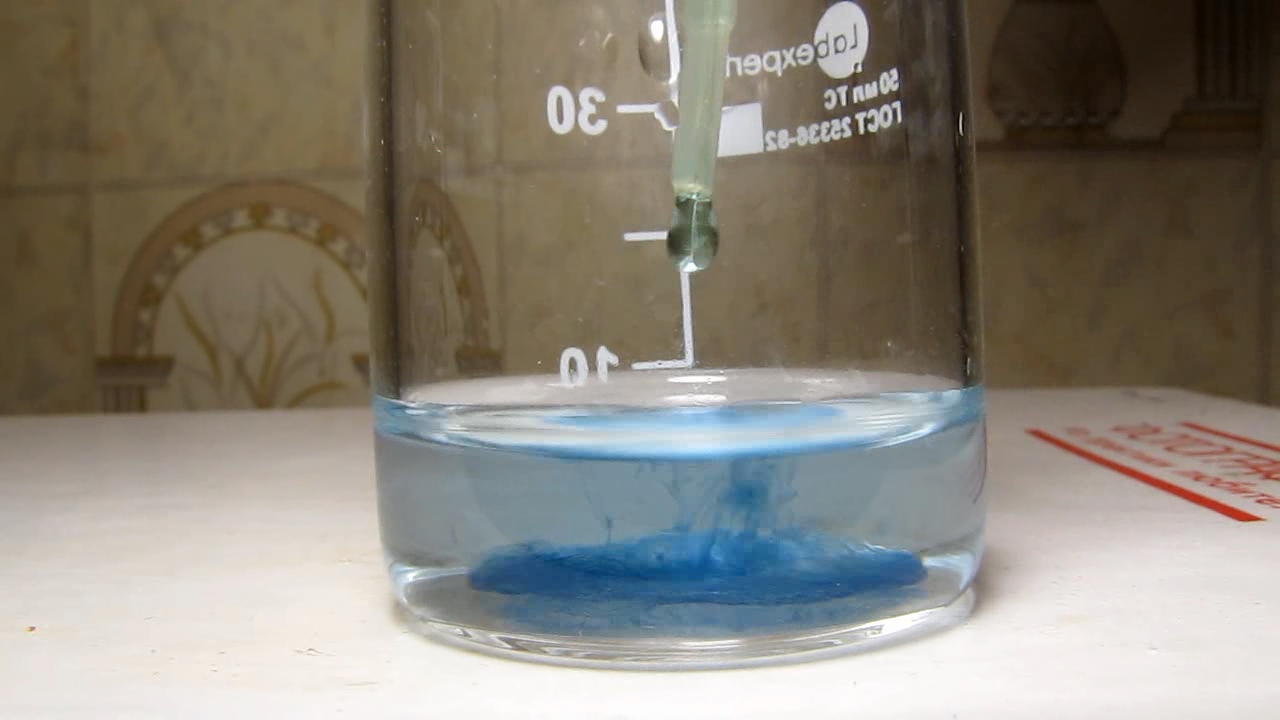
|

|

|
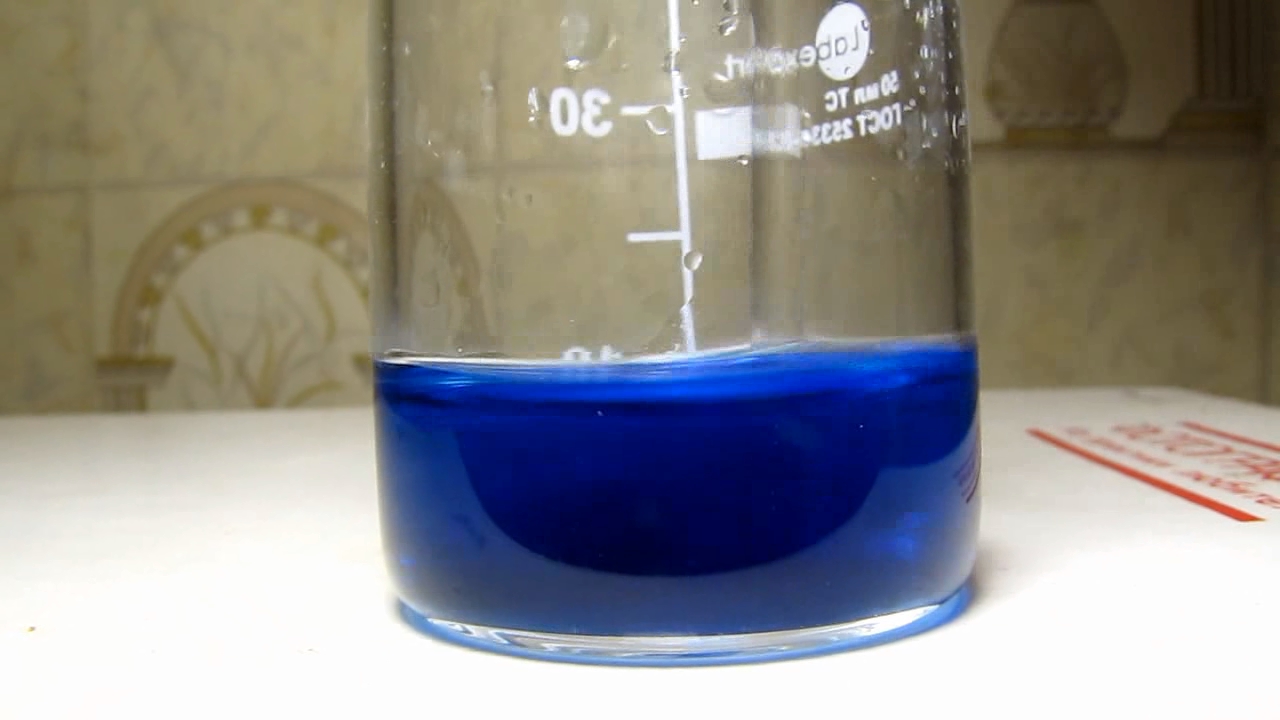
|

|